Author Biographies 22
 Jane Smiley
Jane Smiley
1949-
Jane Smiley (born September 26, 1949) is a Pulitzer Prize-winning American novelist.
Born in Los Angeles, California, Smiley grew up in Webster Groves, Missouri, a suburb of St. Louis, and graduated from John Burroughs School. She obtained an A.B. at Vassar College, then earned an M.F.A. and Ph.D from the University of Iowa. While working toward her doctorate, she also spent a year studying in Iceland as a Fulbright Scholar.
Smiley published her first novel, Barn Blind, in 1980, and won a 1985 O. Henry Award for her short story, “Lily,” which was published in The Atlantic Monthly. Her bestselling A Thousand Acres, a story based on William Shakespeare’s King Lear, received the Pulitzer Prize for Fiction in 1992. In 1995, she wrote her sole television script, produced for an episode of Homicide: Life on the Street. Her novella, The Age of Grief, was made into the 2002 film, The Secret Lives of Dentists. Her essay, “Feminism Meets the Free Market,” was included in the 2006 anthology, Mommy Wars.
Thirteen Ways of Looking at the Novel (2005) is a nonfiction meditation on the history and the nature of the novel, somewhat in the tradition of E.M. Forster’s seminal Aspects of the Novel, that roams from 11th century Japan’s Murasaki Shikibu’s The Tale of Genji to 21st century American women’s literature.
From 1981 to 1996, Smiley taught undergraduate and graduate creative writing workshops at Iowa State University, continuing to teach there even after relocating to California.
Source: http://en.wikipedia.org/wiki/Jane_Smiley
 Bibliography
Bibliography
Press your browser’s BACK button to return to the previous page.
 Adam Smith
Adam Smith
1723-1790
Adam Smith (baptized on June 16, 1723-July 17, 1790) was a Scottish social philosopher and a pioneer of political economy. One of the key figures of the Scottish Enlightenment, Smith is the author of The Theory of Moral Sentiments and An Inquiry into the Nature and Causes of the Wealth of Nations. The latter, usually abbreviated as The Wealth of Nations, is considered his magnum opus and the first modern work of economics. It earned him an enormous reputation and would become one of the most influential works on economics ever published. Smith is widely cited as the father of modern economics and capitalism.
Smith studied social philosophy at the University of Glasgow and the University of Oxford. After graduating, he delivered a successful series of public lectures at Edinburgh, leading him to collaborate with David Hume during the Scottish Enlightenment. Smith obtained a professorship at Glasgow, teaching moral philosophy, and during this time he wrote and published The Theory of Moral Sentiments. In his later life, he took a tutoring position that allowed him to travel throughout Europe, where he met other intellectual leaders of his day. Smith then returned home and spent the next 10 years writing The Wealth of Nations, publishing it in 1776.
He died in 1790 at the age of 67.
Source: http://en.wikipedia.org/wiki/Adam_Smith
 Bibliography
Bibliography
Press your browser’s BACK button to return to the previous page.
 Anna Deavere Smith
Anna Deavere Smith
1950-
Anna Deavere Smith (born September 18, 1950) is an American actress, playwright and professor. She was born in Baltimore, Maryland, the daughter of Anna (nee Young), an elementary school principal, and Deavere Young Smith, a coffee merchant. Smith is an alumna of the historic Western High School. She then attended Beaver College (now Arcadia University), graduating in 1971. She received her M.F.A. in Acting from the American Conservatory Theater in San Francisco, California.
At the beginning of her career, Smith appeared in a wide range of stage productions, including the role of Mistress Quickly in an off-Broadway production of Shakespeare’s Merry Wives of Windsor with the Riverside Shakespeare Company.
Smith is best known for her “documentary theatre” style in plays such as Fires in the Mirror, Twilight: Los Angeles, House Arrest (2000) and Let Me Down Easy (2008). She debuted her one-woman play, The Arizona Project, in Phoenix, Arizona, in November 2008.
As of July 2009, Smith is the artist-in-residence with the Center for American Progress and was developing a new show called The Americans, which documents change in Washington, D.C.
Smith has appeared in several films, including Philadelphia, The American President, Rent and Rachel Getting Married. She had recurring roles on The West Wing (National Security Advisor Dr. Nancy McNally) and The Practice.
Smith teaches in the Department of Performance Studies at the Tisch School of the Arts at New York University. From 1990 to 2000, she was a professor in the drama department at Stanford University. She also teaches at NYU School of Law.
Source: http://en.wikipedia.org/wiki/Anna_Deavere_Smith
 Bibliography
Bibliography
Press your browser’s BACK button to return to the previous page.
 Captain John Smith
Captain John Smith
1580-1631
John Smith was baptized on January 6, 1580, at Willoughby near Alford, Lincolnshire, where his parents rented a farm from Lord Willoughby. After his father died, Smith left home at the age of 16 and set off to sea. He served as a mercenary in the army of Henry IV of France against the Spaniards, fought for Dutch independence from the Spanish King Phillip II, then set off for the Mediterranean Sea. There, he engaged in both trade and piracy and later fought against the Ottoman Turks in the Long War. Smith was promoted to captain while fighting for the Austrian Habsburgs in Hungary, in the campaign of Michael the Brave, in 1600-01.
In 1606, Smith became involved with plans to colonize Virginia for profit by the Virginia Company of London, which had been granted a charter by King James. The expedition set sail in three small ships – the Discovery, the Susan Constant and the Godspeed – on December 20, 1606. His page was a 12-year-old boy named Samuel Collier.
John Smith was reported to be a troublemaker on the voyage and Captain Christopher Newport (in charge of the three ships) had planned to execute him upon arrival in Virginia. However, upon first landing at what is now Cape Henry on April 26, 1607, sealed orders from the Virginia Company were opened. They designated Smith to be one of the leaders of the new colony, forcing Newport to spare him.
The search for a suitable site ended on May 14, 1607, when Captain Edward Maria Wingfield, president of the council, chose the Jamestown site as the location for the colony.
Harsh weather, lack of water, living in a swampy wilderness and attacks from the Powhatan nation almost destroyed the colony. In December 1607, while seeking food along the Chickahominy River, Smith was captured and taken to meet the chief of the Powhatans at Werowocomoco, the main village of the Powhatan Confederacy. The village was on the north shore of the York River, about 15 miles due north of Jamestown and 25 miles downstream from where the river forms from the Pamunkey River and the Mattaponi River at West Point, Virginia. Although he feared for his life, Smith was eventually released without harm and later attributed this in part to the chief’s daughter, Pocahontas who, according to Smith, threw herself across his body: “At the minute of my execution, she hazarded [i.e. risked] the beating out of her own brains to save mine; and not only that, but so prevailed with her father, that I was safely conducted to Jamestown.”
Smith was elected president of the local council in September 1608 and instituted a policy of discipline. He encouraged farming with an admonition taken from the New Testament (II Thessalonians 3:10): “He who does not work, will not eat.” The settlement grew under his leadership. During this period, Smith took the chief of the neighboring tribe hostage and, according to Smith, he did “take this murdering Opechancanough … by the long lock of his head; and with my pistol at his breast, I led him {out of his house} amongst his greatest forces, and before we parted made him [agree to] fill our bark with twenty tons of corn.” A year later, full-scale war broke out between the Powhatans and the Virginia colonists. Smith was seriously injured by a gunpowder burn after a rogue spark landed in his powder keg. He returned to England for treatment in October 1609 and never returned to Virginia.
In 1614, Smith returned to the Americas in a voyage to the coasts of Maine and Massachusetts Bay and named the region “New England.” He made two attempts in 1614 and 1615 to return to the same coast. In the first attempt, a storm dismasted his ship. In the second attempt, he was captured by French pirates off the coast of the Azores. Smith escaped after weeks of captivity and made his way back to England, where he published an account of his two voyages as A Description of New England. He never left England again. He died in 1631, in London, at the age of 51.
Source: http://en.wikipedia.org/wiki/John_Smith_%28explorer%29
 Bibliography
Bibliography
Press your browser’s BACK button to return to the previous page.
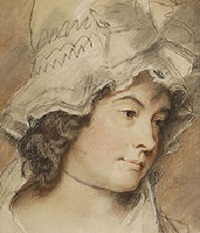 Charlotte Smith
Charlotte Smith
1749-1806
Charlotte Turner Smith (May 4, 1749-October 28, 1806) was an English poet and novelist. She initiated a revival of the English sonnet, helped establish the conventions of Gothic fiction and wrote political novels of sensibility.
Smith was born into a wealthy family and received a typical education for a woman during the late 18th century. However, her father’s reckless spending forced her to marry early. In a marriage that she later described as prostitution, she was given by her father to the violent and profligate Benjamin Smith. Their marriage was deeply unhappy, although they had 12 children together. Charlotte joined Benjamin in debtor’s prison, where she wrote her first book of poetry, Elegiac Sonnets. Its success allowed her to help pay for Benjamin’s release.
Smith eventually left Benjamin and began writing to support their children. Her early novels are exercises in aesthetic development, particularly of the Gothic and sentimentality. Her later novels, including The Old Manor House, often considered her best, support the ideals of the French Revolution.
Smith was a successful writer, publishing 10 novels, three books of poetry, four children’s books and other assorted works over the course of her career. She always saw herself as a poet first and foremost, however, as poetry was considered the most exalted form of literature at the time.
After 1798, Smith’s popularity waned and, by 1803, she was destitute and ill. Smith complained of gout for many years (it was probably rheumatoid arthritis), which made it increasingly difficult and painful for her to write. By the end of her life, it had almost paralyzed her.
She died on October 28, 1806, at Tilford.
Source: http://en.wikipedia.org/wiki/Charlotte_Turner_Smith
 Bibliography
Bibliography
Press your browser’s BACK button to return to the previous page.
 Zadie Smith
Zadie Smith
1975-
Zadie Smith (born on October 25, 1975) is a British novelist. To date, she has written three novels. She was born Sadie Smith in the northwest London borough of Brent to a Jamaican mother, Yvonne Bailey, and a British father, Harvey Smith. Her mother had grown up in Jamaica and emigrated to Britain in 1969.
Smith attended the local state schools, Malorees Junior School and Hampstead Comprehensive School, and King’s College, Cambridge University, where she studied English literature. At Cambridge, she published a number of short stories in a collection of new student writing called The Mays Anthology. These attracted the attention of a publisher, who offered her a contract for her first novel. Smith decided to contact a literary agent and was taken on by A.P. Watt.
Smith completed White Teeth during her final year at Cambridge. Published in 2000, the novel became a bestseller immediately. Her second novel, The Autograph Man, was published in 2002 and was a commercial success. Her third novel was On Beauty, published in September 2005.
After the publication of The Autograph Man, Smith visited the United States as a 2002-2003 Radcliffe Institute for Advanced Study Fellow at Harvard University. She started work on a book of essays, The Morality of the Novel, aka Fail Better, in which she considers a selection of 20th century writers through the lens of moral philosophy. Some portions of this book are included in the essay collection, Changing My Mind, published in November 2009.
After teaching fiction at Columbia University School of the Arts, she joined New York University as a tenured professor of fiction as of September 1, 2010.
Beginning with the March 2010 issue, extending until late 2011, Smith was the monthly New Books reviewer for Harper’s Magazine.
Source: http://en.wikipedia.org/wiki/Zadie_Smith
 Bibliography
Bibliography
Press your browser’s BACK button to return to the previous page.
 Virginia Driving Hawk Sneve
Virginia Driving Hawk Sneve
1933-
Virginia Driving Hawk Sneve (last name rhymes with “navy”) was born on February 21, 1933. She was raised on the Rosebud reservation in South Dakota and is an enrolled member of the Rosebud Sioux tribe. In addition to her achievements as an award-winning writer, Sneve has had a full career as an English teacher and school counselor.
Sneve began her professional writing career in 1972 with the publication of Jimmy Yellow Hawk. The year before, she had submitted the manuscript to an annual contest sponsored by the Interracial Council of Minority Books for Children. Her manuscript won the category for Native American writers and publication soon followed. Since then, Sneve has published 16 children’s books of fiction and nonfiction.
Sneve was first inspired to write juvenile literature when she discovered that the books available to her own young children reflected only stereotypical representations of their Native heritage. A need for the realistic portrayal of American Indians prompted Sneve to draw on her Native background and fill that void herself.
Sneve responded to the same need for culturally representative literature when she began writing books for adults. In The Dakota’s Heritage, Sneve combined historical research with the oral histories and traditional teachings she had received growing up. The book touches on aspects of the Dakota culture ranging from the geography of the area to the lives of tribal women, from the mystical and supernatural to the practical and political.
Even closer to home, Sneve explores her personal and cultural history – based on the “neglected feminine half of her family” – in Completing the Circle. This carefully researched and engaging work recognizes the quiet struggles and personal achievements of Sneve’s ancestors, setting them against a backdrop of broader cultural issues and profound change.
Source: https://en.wikipedia.org/wiki/Virginia_Driving_Hawk_Sneve
 Bibliography
Bibliography
Press your browser’s BACK button to return to the previous page.
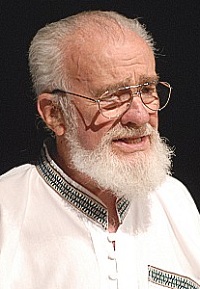 W.D. Snodgrass
W.D. Snodgrass
1926-2009
William De Witt Snodgrass (January 5, 1926-January 13, 2009) was an American poet who also wrote under the pseudonym S.S. Gardons. He won the 1960 Pulitzer Prize for Poetry.
Snodgrass was born in Beaver Falls, Pennsylvania; the family lived in Wilkinsburg but drove to Beaver Falls for his birth because his grandfather was a doctor in the town. Eventually, the family moved to Beaver Falls and Snodgrass graduated from the local high school in 1943. He then attended Geneva College until 1944 and had an offer from the Juilliard School for admission because of his musical abilities on the timpani, but he was drafted into the U.S. Navy before he could accept. After demobilization in 1946, Snodgrass transferred to the University of Iowa and enrolled in the Iowa Writers’ Workshop, originally intending to become a playwright but eventually joining the poetry workshop. He received a Bachelor of Arts degree in 1949, a Master of Arts degree in 1951 and a Master of Fine Arts degree in 1953.
Snodgrass had a long and distinguished academic career, having taught at Cornell (1955-67), Rochester (1957-68), Wayne State (1959-68), Syracuse (1968-77), Old Dominion (1978-79) and the University of Delaware. He retired from teaching in 1994 to devote himself full-time to his writing. This included autobiographical sketches, essays and the critical verse “deconstructions” of De/Construct.
He died in his home in Madison County, New York, aged 83, following a four-month battle with lung cancer.
Source: http://en.wikipedia.org/wiki/W._D._Snodgrass#cite_note-4
 Bibliography
Bibliography
Press your browser’s BACK button to return to the previous page.
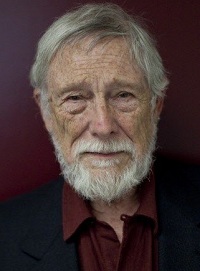 Gary Snyder
Gary Snyder
1930-
Gary Sherman Snyder (born May 8, 1930) is an American poet often associated with the Beat Generation and the San Francisco Renaissance, as well as an essayist, lecturer and environmental activist (frequently described as the “poet laureate of Deep Ecology”). Snyder is a winner of a Pulitzer Prize for Poetry. His work, in his various roles, reflects an immersion in both Buddhist spirituality and nature. Snyder has also translated literature into English from ancient Chinese and modern Japanese. For many years, Snyder served as a faculty member at the University of California, Davis, and served for a time on the California Arts Council.
Snyder was born in San Francisco, California, to Harold and Lois Hennessy Snyder. Snyder is of German, Scots-Irish and English ancestry. His family, impoverished by the Great Depression, moved to King County, Washington, when he was two years old. There they tended dairy cows, kept laying hens, had a small orchard and made cedar-wood shingles until moving to Portland, Oregon, 10 years later.
In 1947, he started attending Reed College on a scholarship. While attending Reed, Snyder did folklore research on the Warm Springs Indian Reservation in central Oregon. He graduated with a dual degree in anthropology and literature in 1951. In the mid-1960s, he published a collection of his poems from the early to mid ’50s, Myths & Texts (1960), and Six Sections from Mountains and Rivers without End (1965).
In 1968, his book, The Back Country, appeared, again mainly a collection of poems stretching back over about 15 years. Snyder devoted a section at the end of the book to his translations of 18 poems by Kenji Miyazawa.
Regarding Wave, a stylistic departure offering poems that were more emotional, metaphoric and lyrical, appeared in 1969. He continued to publish poetry throughout the 1970s. Snyder also wrote numerous essays setting forth his views on poetry, culture, social experimentation and the environment. Many of these were collected in Earth House Hold (1969), The Old Ways (1977), The Real Work (1980), The Practice of the Wild (1990), A Place in Space (1995) and The Gary Snyder Reader (1999). In 1979, Snyder published He Who Hunted Birds in His Father’s Village: The Dimensions of a Haida Myth. Snyder’s journals from his travel in India in the mid-1960s appeared in 1983 under the title, Passage through India.
In the 1980s and 1990s, Snyder expressed many of his insights and ideas in public lectures and in essays, including works published in major outdoor and environmental magazines and later collected in books.
In 1986, Snyder became a professor in the writing program at the University of California, Davis. As Snyder’s involvement in environmental issues and his teaching grew, he seemed to move away from poetry for much of the 1980s and early 1990s. However, in 1996 he published the complete Mountains and Rivers without End which, in its mixture of the lyrical and epic modes celebrating the act of inhabitation on a specific place on the planet, is both his finest work and a summation of what re-inhabitory poetics stands for. This work was written over a 40-year period.
Source: http://en.wikipedia.org/wiki/Gary_Snyder
 Bibliography
Bibliography
Press your browser’s BACK button to return to the previous page.
 Alexander Solzhenitsyn
Alexander Solzhenitsyn
1918-2008
Aleksandr Isayevich Solzhenitsyn (December 11, 1918-August 3, 2008) was a writer who, through his often-suppressed writings, helped to raise global awareness of the gulag, the Soviet Union’s forced-labor camp system – particularly in The Gulag Archipelago and One Day in the Life of Ivan Denisovich, two of his best-known works.
Solzhenitsyn was awarded the Nobel Prize in Literature in 1970. He was expelled from the Soviet Union in 1974 but returned to Russia in 1994 after the Soviet system had collapsed.
Solzhenitsyn died of heart failure near Moscow on August 3, 2008, at the age of 89.
Source: http://en.wikipedia.org/wiki/Aleksandr_Solzhenitsyn
 Bibliography
Bibliography
Press your browser’s BACK button to return to the previous page.
 Susan Sontag
Susan Sontag
1933-2004
Susan Sontag (January 16, 1933-December 28, 2004) was an American author, literary theorist and political activist; her published works include On Photography and Against Interpretation.
Sontag, born Susan Rosenblatt, was born in New York City to Jack Rosenblatt and Mildred Jacobsen, both Jewish. Her father managed a fur-trading business in China, where he died of tuberculosis when Susan was five years old. Seven years later, her mother married Nathan Sontag.
Sontag grew up in Tucson, Arizona, and, later, in Los Angeles, where she graduated from North Hollywood High School at the age of 15. She began her undergraduate studies at Berkeley but transferred to the University of Chicago in admiration of its famed core curriculum. At Chicago, she undertook studies in philosophy, ancient history and literature and graduated with an A.B. She did graduate work in philosophy, literature and theology at Harvard. After completing her Master of Arts in philosophy and beginning doctoral work at Harvard, Sontag was awarded an American Association of University Women’s fellowship for the 1957-1958 academic year to St. Anne’s College, Oxford. Oxford did not appeal to her, however, and she transferred after the Michaelmas term of 1957 to the University of Paris. It was in Paris that Sontag socialized with expatriate artists and academics.
At 17, while at Chicago, Sontag married Philip Rieff after a 10-day courtship. Sontag and Rieff were married for eight years, throughout which they worked jointly on the study, Freud: The Mind of the Moralist, that would be attributed solely to Philip Rieff as a stipulation of the couple’s divorce in 1958.
The publication of Against Interpretation (1966) helped establish Sontag’s reputation as “the Dark Lady of American Letters.”
Sontag died in New York City on December 28, 2004, aged 71, from complications of myelodysplastic syndrome, which had evolved into acute myelogenous leukemia.
Source: http://en.wikipedia.org/wiki/Susan_Sontag
 Bibliography
Bibliography
Press your browser’s BACK button to return to the previous page.
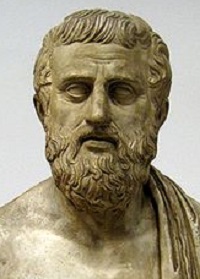 Sophocles
Sophocles
496 BC-406 BC
Sophocles (c. 497/6 BC-winter 406/5 BC) is one of three ancient Greek tragedians whose plays have survived. His first plays were written later than those of Aeschylus and earlier than or contemporary with those of Euripides. According to the Suda, a 10th century encyclopedia, Sophocles wrote 123 plays during the course of his life but only seven have survived in a complete form: Ajax, Antigone, The Women of Trachis, Oedipus the King, Electra, Philoctetes and Oedipus at Colonus.
For almost 50 years, Sophocles was the most-feted playwright in the dramatic competitions of the city-state of Athens that took place during the religious festivals of the Lenaea and the Dionysia. He competed in around 30 competitions, won perhaps 24 and was never judged lower than second place. Aeschylus won 14 competitions and was sometimes defeated by Sophocles, while Euripides won only four competitions.
Sophocles was born into a wealthy family – his father, Sophilus, was an armor manufacturer a member of the rural deme (small community) of Colonus Hippius in Attica – and was highly educated. He was born a few years before the Battle of Marathon in 490 BC: The exact year is unclear, although 497/6 is the most likely. Sophocles’ first artistic triumph was in 468 BC, when he took first prize in the Dionysia theatre competition over the reigning master of Athenian drama, Aeschylus.
At the age of 16, Sophocles was chosen to lead the paean (a choral chant to a god) celebrating the Greek victory over the Persians at the Battle of Salamis. He was elected as one of 10 strategoi, high executive officials that commanded the armed forces, as a junior colleague of Pericles. In 443/2 he served as one of the Hellenotamiai, or treasurers of Athena, helping to manage the finances of the city during the political ascendancy of Pericles. According to the Vita Sophoclis, he served as a general in the Athenian campaign against Samos, which had revolted in 441 BC; he was supposed to have been elected to his post as the result of his production of Antigone. He was elected in 413 BC one of the commissioners (probouloi) who responded to the catastrophic destruction of the Athenian expeditionary force in Sicily during the Peloponnesian War.
Sophocles died at the age of 90 or 91 in the winter of 406/5 BC, having seen within his lifetime both the Greek triumph in the Persian Wars and the bloodletting of the Peloponnesian War.
Source: http://en.wikipedia.org/wiki/Sophocles
 Bibliography
Bibliography
Press your browser’s BACK button to return to the previous page.
 Gary Soto
Gary Soto
1952-
Gary Soto (born April 12, 1952, in Fresno, California) is a Mexican-American author and poet, son of Manuel and Angie Soto. In his youth, he worked in the fields of the San Joaquin Valley and in factories in Fresno. His father died in 1957, when he was just five years old. Because his family had to struggle to find work, Soto had little time or encouragement for school; hence, he was not a good student.
He attended Fresno City College and California State University, Fresno, where he earned his B.A. degree in English in 1974. He did graduate work in poetry writing at the University of California, Irvine, where he earned his M.F.A. in 1976. He states that he wanted to become a writer in college after discovering the novelist Gabriel Garcia Marquez.
Soto has written novels, plays and memoirs and has edited several literary anthologies. His story, “The No-Guitar Blues,” was made into a film and he produced another film based on his book, The Pool Party. He is a prolific writer of children’s books.
Soto has taught at University of California, Berkeley, and at University of California, Riverside, where he was a Distinguished Professor.
Source: http://en.wikipedia.org/wiki/Gary_Soto
 Bibliography
Bibliography
Press your browser’s BACK button to return to the previous page.
 Terry Southern
Terry Southern
1924-1995
Terry Southern began writing satiric, outrageous fiction at the age of 12, when he rewrote Edgar Allen Poe stories “because they didn’t go far enough.”
After serving in the U.S. Army as a lieutenant in World War II, he wrote short stories while studying at the Sorbonne. “The Accident,” published in the premier issue of The Paris Review, was the first short story to appear in that magazine. “The Sun and the Stillborn Stars” determined the course of The Paris Review as a venue for short fiction. He admired and befriended British novelist Henry Green, who convinced Andre Deutch to publish his first novel, Flash and Filigree (1958).
Residing in Geneva, he spent days conjuring surrealistic exploits for trillionaire trickster “Grand Guy Guy Grand” in The Magic Christian (1958) while at the same time writing Candy (1960) for Maurice Girodias’ Olympia Press. He and Gregory Corso presented Naked Lunch to Girodias, convincing him to publish it. Southern published numerous short stories in England, France and America, (anthologized in Red Dirt, Marijuana and Other Tastes) and co-edited Writers in Revolt: An Anthology of the Most Controversial Writing in the World Today (1962) with Alex Trocci and Richard Seaver.
After settling in an old farmhouse in East Canaan, Connecticut, Stanley Kubrick, after meeting him during an interview Southern conducted for Esquire, invited him to employ a satirical touch to the screenplay Dr. Strangelove (1964). A rewarding period in Hollywood followed, including writing dialog for the films: The Loved One (1965), The Collector, Cincinnati Kid (1966), Casino Royale and Barbarella (1967). Southern helped launch the independent film movement by co-authoring Easy Rider (1968) and The End of the Road (1970), writing/co-producing with his old Paris/Greenwich Village hipster soulmate Aram Avakian. After the quiet publication of Blue Movie (1970), he turned to screenwriting full-time, working on original scripts, adaptations and speculative assignments throughout the ’70s and ’80s.
With legitimate film work increasingly elusive, Southern taught screenwriting at both NYU and Columbia University from the late ’80s until his death in 1995. His last novel, Texas Summer, was released in 1992.
Source: http://www.terrysouthern.com/bio.html
 Bibliography
Bibliography
Press your browser’s BACK button to return to the previous page.
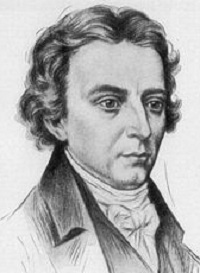 Robert Southey
Robert Southey
1774-1843
Robert Southey (August 12, 1774-March 21, 1843) was an English poet of the Romantic school, one of the so-called “Lake Poets” and Poet Laureate for 30 years from 1813 to his death in 1843. He was a prolific letter writer, literary scholar, essay writer, historian and biographer. His biographies include the life and works of John Bunyan, John Wesley, William Cowper, Oliver Cromwell and Horatio Nelson. He was also a renowned Portuguese and Spanish scholar, translating a number of works of those two countries into English and writing both a History of Brazil and a History of the Peninsular War. Perhaps his most enduring contribution to literary history is the immortal children’s classic, “The Story of the Three Bears,” the original Goldilocks story, which first saw print in 1834 in Southey’s novel, The Doctor.
Southey was born on Wine Street, Bristol, England, to Thomas Southey and Margaret Hill and educated at Westminster School, London (from which he was expelled for writing a magazine article in The Flagellant condemning flogging), and Balliol College, Oxford. After experimenting with a writing partnership with Samuel Taylor Coleridge, most notably with the joint composition of “The Fall of Robespierre,” he published his first collection of poems in 1794.
Southey’s wife, Edith Fricker, whom he married at St. Mary Redcliffe, Bristol, on November 14, 1795, was the sister of Coleridge’s wife, Sara Fricker. The Southeys set up home at Greta Hall, Keswick, in the Lake District, living on a tiny income. Also living at Greta Hall with Southey – and supported by him – were Sara Coleridge and her three children, following their abandonment by Coleridge, and the widow of fellow poet Robert Lovell and her son.
In 1808, Southey used the pseudonym Don Manuel Alvarez Espriella to write Letters from England, an account of a tour of the country supposedly from a foreigner’s perspective. The book is said to contain a more accurate picture of English ways at the beginning of the 19th century than exists anywhere else.
From 1809, Southey contributed to The Quarterly Review and had become so well-known by 1813 that he was appointed Poet Laureate after Sir Walter Scott refused the post.
In 1819, through a mutual friend, Southey met leading civil engineer Thomas Telford and struck up a strong friendship. From mid-August to October 1, 1819, Southey accompanied Telford on an extensive tour of his engineering projects in the Scottish Highlands, keeping a diary of his observations. This was published posthumously in 1929 as Journal of a Tour in Scotland in 1819.
He died on March 23, 1843, and is buried in the churchyard of Crosthwaite Church, Keswick, where he worshipped for 40 years.
Source: http://en.wikipedia.org/wiki/Robert_Southey
 Bibliography
Bibliography
Press your browser’s BACK button to return to the previous page.
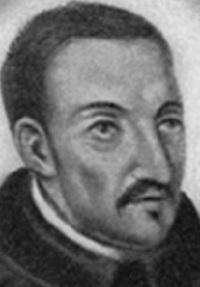 Robert Southwell
Robert Southwell
1561-1595
Robert Southwell, English Jesuit and poet, son of Richard Southwell of Horsham St. Faith’s, Norfolk, was born in 1560/61. The Southwells were affiliated with many noble English families and Robert’s grandmother, Elizabeth Shelley, figures in the genealogy of Shelley the poet. He was sent at a very young age to the Roman Catholic college at Douai and thence to Paris, where he was placed under a Jesuit father, Thomas Darbyshire. In 1580, he joined the Society of Jesus after a two-year novitiate, passed mostly at Tournay.
In spite of his youth, he was made prefect of studies in the English college of the Jesuits at Rome and was ordained priest in 1584. It was in that year that an act was passed forbidding any English-born subject of the queen who had entered into priest’s orders in the Roman Catholic Church since her accession to remain in England longer than 40 days on pain of death. But Southwell, at his own request, was sent to England in 1586 as a Jesuit missionary with Henry Garnett. He went from one Catholic family to another, administering the rites of the Church and, in 1589, became domestic chaplain to Ann Howard, whose husband, the first Earl of Arundel, was in prison convicted of treason. It was to him that Southwell addressed his “Epistle of Comfort.” This and other of his religious tracts, “A Short Rule of Good Life,” “Triumphs over Death,” “Mary Magdalen’s Tears” and “A Humble Supplication to Queen Elizabeth,” were widely circulated in manuscript.
After six years of successful labor, Southwell was arrested. He was in the habit of visiting the house of Richard Bellamy, who lived near Harrow and was under suspicion on account of his connection with Jerome Bellamy, who had been executed for sharing in Anthony Babington’s plot. One of the daughters, Anne Bellamy, was arrested and imprisoned in the gatehouse of Holborn. She revealed Southwell’s movements to Richard Topcliffe, who immediately arrested him. He was initially imprisoned in Topcliffe’s house, where he was repeatedly put to the torture in the vain hope of extracting evidence about other priests.
Transferred to the gatehouse at Westminster, he was so abominably treated that his father petitioned Elizabeth that he might either be brought to trial and put to death, if found guilty, or removed in any case from “that filthy hole.” Southwell was then lodged in the Tower, but he was not brought to trial until February 1595. There is little doubt that much of his poetry, none of which was published during his lifetime, was written in prison.
On February 10, 1595 he was tried before the King’s Bench on the charge of treason and was hanged at Tyburn on the following day.
Source: http://www.luminarium.org/renlit/southbio.htm
 Bibliography
Bibliography
Press your browser’s BACK button to return to the previous page.
 Elizabeth George Speare
Elizabeth George Speare
1908-1994
Elizabeth George Speare (November 21, 1908-November 15, 1994) was a respected, dedicated and talented American children’s author who won many awards for her historical fiction novels, including two Newbery Medals. She has been called one of America’s 100 most popular children’s authors. Much of her work has become mandatory reading in many schools throughout the nation. Indeed, because her books have sold so well, she is also cited as one of the Educational Paperback Association’s top 100 authors.
Speare was born in Melrose, Massachusetts, to Harry Allan and Demetria George. Her childhood, as she later recalled, was “exceptionally happy” and Melrose was “an ideal place in which to have grown up, close to fields and woods where we hiked and picnicked, and near to Boston where we frequently had family treats of theaters and concerts.” She had an extended family with one brother and many aunts, uncles and cousins and, most important, very loving and supportive parents. Speare lived much of her life in New England, the setting for many of her books.
Speare discovered her gift for writing at the age of eight and began composing stories while still in high school. After completing her Bachelor of Arts degree at Smith College in 1930, she earned her master’s degree in English from Boston University and taught English at several private Massachusetts high schools from 1932 to 1936. In 1936, she met her future husband, Alden Speare, and together the two moved to Connecticut, where they married and raised two children. Speare only seriously began to focus on literature when her children were in junior high school.
Speare’s first published work was a magazine article about skiing with her children. She also wrote many magazine articles based on her experiences as a mother and experimented with one-act plays. Eventually, her work saw circulation in Better Homes and Gardens, Women’s Day, Parents and American Heritage.
Speare published Calico Captive, her first novel, in 1957. The next year she completed her second historical fiction work, The Witch of Blackbird Pond, which won numerous awards, including the Newbery Medal. She earned her second Newbery Medal for her third book, The Bronze Bow, published in 1961. In 1984, The Sign of the Beaver was published and received a Newbery Honor Citation, the Scott O’Dell Award for Historical Fiction and the Christopher Award. In 1989, Speare received the Laura Ingalls Wilder Award for her distinguished and enduring contribution to children’s literature.
Speare died of an aortic aneurysm on November 15, 1994, in Northwest General Hospital in Tucson, Arizona. She was 85 years old.
Source: http://www.biblio.com/author_biographies/2111937/Elizabeth_George_Speare.html
 Bibliography
Bibliography
Press your browser’s BACK button to return to the previous page.
 Rachel Speght
Rachel Speght
1597-after 1621
Rachel Speght (born in 1597) was a poet and polemicist. She was the first Englishwoman to identify herself, by name, as a polemicist and critic of gender ideology. A feminist and a Calvinist, she is perhaps best known for her tract, “A Mouzell for Melastomus” (1617), a prose refutation of Joseph Swetnam’s misogynistic tract, “The Arraignment of Lewd, Idle, Froward, and Unconstant Women,” and a significant contribution to the Protestant discourse of biblical exegesis, defending women’s nature and the worth of womankind. Speght also published a volume of poetry, Mortalities Memorandum with a Dreame Prefixed (1621), a Christian reflection on death and a defense of the education of women.
Speght was born the daughter of a Calvinist minister in London, England, in 1597. Her writings reveal that she was unusually well educated in rhetoric, logic, classical and Christian texts and Latin, and that she had a thorough knowledge of Christian scripture.
She was married at age 24, in August 1621, to a Calvinist minister named William Procter. She lived with her husband in Upminster, Essex, until 1627, then in London at St. Giles, Cripplegate, until 1634, and then in Stradishall in Suffolk. Procter was ejected from his parish over a controversy concerning his Laudian sympathies in 1644. Speght was named as a participant in the controversy.
Procter died in Stradishall in 1661 and it is likely that his wife predeceased him, as she is not mentioned in his will.
Source: http://en.wikipedia.org/wiki/Rachel_Speght
 Bibliography
Bibliography
Press your browser’s BACK button to return to the previous page.
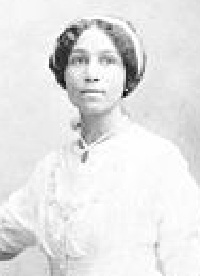 Anne Spencer
Anne Spencer
1882-1975
Annie Bethel Spencer (better known as Anne Spencer; February 6, 1882-July 27, 1975) was an African-American poet and active participant in the New Negro Movement and Harlem Renaissance period. She was the first Virginian and first African-American to have her poetry included in The Norton Anthology of American Poetry.
The only child of Joel Cephus Bannister and Sarah Louise Scales, Spencer was born in Henry County, Virginia. Her parents separated while she was very young and she moved with her mother to West Virginia, where she was placed under the care of William T. Dixie, a prominent member of the Black community. Sarah noticed her daughter’s quick abilities with the English language and sent her to the Virginia Seminary, where she graduated in 1899. Also in this year, she met her husband, Edward Spencer, and they were married on May 15, 1901. The celebrated Harlem Renaissance poet James Weldon Johnson helped to discover her talent as a poet and also gave her the pen name of Anne Spencer.
From 1903 until her death in 1975, Spencer lived and worked in a home at 1313 Pierce Street in Lynchburg, Virginia. As an adult, her poetry grew in popularity and meaning. The Harlem Renaissance allowed her to meet people like herself, who inspired her poetry through their ideas and artwork and eventually led to her work being published. Johnson and W.E.B. Du Bois were regular visitors at her house and would often spend the day in deep conversation, discussing everything from art to politics. They all shared similar likes and dislikes and were all strong, independent thinkers. Spencer became more and more involved in her local community and the NAACP.
Although most of her poems remain reflections of her own ideas and thoughts, hints of influence from her work with the Harlem Renaissance began to show. Aside from her involvement in her community, Spencer’s most important role was that of mother. Together, she and her husband lovingly raised their three children: Bethel, Alroy and Chauncey Spencer.
Source: http://en.wikipedia.org/wiki/Anne_Spencer
 Bibliography
Bibliography
Press your browser’s BACK button to return to the previous page.
 Edmund Spenser
Edmund Spenser
1552-1599
Edmund Spenser (born 1552/53 in London, England-January 13, 1599) was an English poet. Little is known for certain about his life before he entered the University of Cambridge. His first important publication, “The Shepheardes Calender” (1579), can be called the first work of the English literary Renaissance.
By 1580, he was apparently serving the Earl of Leicester and was part of a literary circle led by Sir Philip Sidney. In 1580, he became secretary to the lord deputy of Ireland, where he spent much of his remaining life; in 1588 or 1589, he took over a large property at Kilcolman, near Cork.
In 1590, he published the first part of the long allegorical poem, “The Faerie Queene,” an imaginative vindication of Protestantism and Puritanism and a glorification of England and Elizabeth I. The central poem of the Elizabethan period and one of the greatest poems in English, it was composed in a revolutionary, nine-line stanzaic pattern, the “Spenserian stanza,” that was used by many later poets.
Of the 12 books he planned for the poem, he completed just more than half. “Amoretti” (1595), a sonnet sequence, and “Epithalamion” (1595), a marriage ode, are among his other works.
In the Irish uprising of 1598, Kilcolman was burned; Spenser died shortly afterward and was buried in London.
Source: http://www.answers.com/topic/edmund-spenser
 Bibliography
Bibliography
Press your browser’s BACK button to return to the previous page.
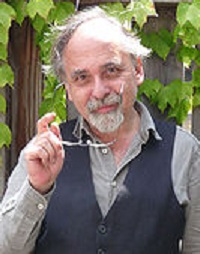 Art Spiegelman
Art Spiegelman
1948-
Art Spiegelman (born February 15, 1948) is an American comics artist, editor and advocate for the medium of comics, best known for his Pulitzer Prize-winning comic book memoir, Maus.
Spiegelman was born in Stockholm, Sweden, to Polish Jews Vladek Spiegelman and Anja Spiegelman (nee Zylberberg). He grew up in Rego Park in Queens, New York City, New York, and graduated from the High School of Art and Design in Manhattan. Spiegelman attended Harpur College, now Binghamton University. He did not graduate but received an honorary doctorate from there 30 years later.
Spiegelman was a major figure in the underground comix movement of the 1960s and 1970s, contributing to publications such as Real Pulp, Young Lust and Bizarre Sex. He co-founded a significant comics anthology publication, Arcade (with Bill Griffith), in San Francisco during the early 1970s.
Spiegelman also worked in more commercial forums: After a summer internship (when he was 18) at Topps Bubble Gum, he was hired as a staff writer-artist-editor in Woody Gelman’s Product Development Department. During his 20 years with Topps, Spiegelman invented Garbage Candy (candy in the form of garbage, sold in miniature plastic garbage cans), the Wacky Packages card series, Garbage Pail Kids and countless other hugely successful novelties.
In 1992, Spiegelman worked for The New Yorker for 10 years but resigned a few months after the September 11, 2001, terrorist attacks. Spiegelman states that his resignation from The New Yorker was to protest the “widespread conformism” in the United States media.
In September 2004, he released In the Shadow of No Towers, a book relating his experience of the Twin Towers attack and the psychological after-effects. Beginning fall 2005, Spiegelman’s new series, Portrait of the Artist as a Young %@&*! appeared in The Virginia Quarterly Review.
In the June 2006 edition of Harper’s magazine, he published an article on the Jyllands-Posten Muhammad cartoons controversy that had occurred earlier in the year. At least one vendor, Canada’s Indigo chain of booksellers, refused to sell the particular issue. Called “Drawing Blood: Outrageous Cartoons and the Art of Outrage,” the article contained a survey of the sometimes-dire effect of political cartooning on its creators.
Spiegelman is a prominent advocate for the medium of comics. He taught courses in the history and aesthetics of comics at schools including the University of California, Santa Cruz, and at the School of Visual Arts in New York.
Together with Francoise Mouly, he published three hardcover anthologies of comics for children, called Little Lit and, in 2006, Big Fat Little Lit.
Source: http://en.wikipedia.org/wiki/Art_Spiegelman
 Bibliography
Bibliography
Press your browser’s BACK button to return to the previous page.
 Steven Spielberg
Steven Spielberg
1946-
Steven Spielberg was born on December 18, 1946, in Cincinnati, Ohio. An amateur filmmaker as a child, Steven Spielberg moved several times growing up and spent part of his youth in Arizona. He became one of the youngest television directors for Universal in the late 1960s. A highly praised television film, Duel (1972), brought him the opportunity to direct for the cinema, and a string of hits have made him the most commercially successful director of all time.
His films have explored primeval fears, as in Jaws (1975), or expressed childlike wonder at the marvels of this world and beyond, as in Close Encounters of the Third Kind (1977) and ET (1982). Spielberg has also tackled literary adaptations, such as The Color Purple (1985) and Empire of the Sun (1987). And audiences around the world were riveted by the continuing adventures of his daredevil hero, Indiana Jones, in such films as Raiders of the Lost Ark (1981) and Indiana Jones and the Temple of Doom (1984). Imaginative fantasy is dominant in his version of Peter Pan, Hook (1991), Jurassic Park (1993) and its sequel, The Lost World: Jurassic Park (1997).
Spielberg is also known for his impressive historical films, such as the Holocaust drama, Schindler’s List (1993). In 1998, he revisited World War II, this time from the perspective of American soldiers in Europe in Saving Private Ryan (1998). His first film company, Amblin Entertainment, founded in 1982, produced several other successful films, notably Back to the Future (1985) and its two sequels, and Who Framed Roger Rabbit (1988).
In 1994, Spielberg formed a new studio, Dreamworks SKG, with Jeffrey Katzenberg and David Geffen. In 2001, he completed the science fiction film, AI: Artificial Intelligence, a project begun by Stanley Kubrick. Later films include the Academy Award-nominated Munich (2005). He also served as producer for the Clint Eastwood-directed World War II films, Flags of Our Fathers (2006) and Letters from Iwo Jima (2006).
Source: http://www.biography.com/people/steven-spielberg-9490621
 Bibliography
Bibliography
Press your browser’s BACK button to return to the previous page.
 Jerry Spinelli
Jerry Spinelli
1941-
Jerry Spinelli (born February 1, 1941) is an author of children’s novels on adolescence and early adulthood. He is best known for his novels, Maniac Magee and Wringer.
Spinelli was born in Norristown, Pennsylvania, and currently resides in Wayne, Pennsylvania. At the age of 16, his love of sports inspired him to compose a poem about a recent football victory. Later, unbeknownst to him, his father published it in the local newspaper. It was at this time he realized that he would not become a major league baseball player and decided to become a writer instead.
During his time at Gettysburg College, Spinelli spent his time writing short stories and was the editor of the college literary magazine. After graduation, he became a writer and editor for a department store magazine. Over the next 20 years, he spent his time working ordinary jobs during the day so that he had the energy to write fiction in his spare time. He found himself writing during lunch breaks, on weekends and after dinner.
His first four novels were written for adults and were all rejected. His fifth novel was also intended for adults but became his first children’s book. This work, Space Station Seventh Grade, was published in 1982.
Spinelli graduated from Gettysburg College in 1963 and acquired his M.A. from Johns Hopkins University in 1964.
Source: http://en.wikipedia.org/wiki/Jerry_Spinelli
 Bibliography
Bibliography
Press your browser’s BACK button to return to the previous page.
 Harriet Prescott Spofford
Harriet Prescott Spofford
1835-1921
Harriet Elizabeth Prescott Spofford (April 3, 1835-August 14, 1921) was a notable American writer remembered for her novels, poems and detective stories.
Born in Calais, Maine, she moved with her parents to Newburyport, Massachusetts, in 1849. She attended the Putnam Free School in Newburyport, and Pinkerton Academy in Derry, New Hampshire, from 1853 to 1855. When her parents became sick, she set to work as a writer of necessity, sometimes laboring 15 hours a day. Spofford’s gothic romances were set apart by luxuriant descriptions, and an unconventional handling of female stereotypes of the day.
In 1859, she submitted to The Atlantic Monthly a story about Parisian life entitled “In a Cellar.” The magazine’s editor, James Russell Lowell, at first believed the story to be a translation and withheld it from publication. Reassured that it was original, he published it and Spofford’s reputation was established. She became a welcome contributor to periodicals.
In 1865, she married Richard S. Spofford, a Boston lawyer, and they resided on Deer Island, overlooking the Merrimack River at Amesbury, where she died in 1921.
Source: http://en.wikipedia.org/wiki/Harriet_Elizabeth_Prescott_Spofford
 Bibliography
Bibliography
Press your browser’s BACK button to return to the previous page.
 Johanna Spyri
Johanna Spyri
1827-1901
Johanna Spyri (June 12, 1827-July 7, 1901) was an author of children’s stories and is best known for her book, Heidi. Born Johanna Louise Heusser in the rural area of Hirzel, Switzerland, as a child she spent several summers in the area around Chur in Graubunden, the setting she later would use in her novels.
In 1852, Johanna Heusser married Bernhard Spyri, a lawyer. While living in the city of Zurich, she began to write about life in the country. Her first book, A Leaf on Vrony’s Grave, was published in 1871 and the following year further stories for both adults and children appeared, among them the tale of Heidi, which she wrote in four weeks.
Her husband and her only child, a son named Bernard, both died in 1884. Alone, she devoted herself to charitable causes and wrote more than 50 more stories before her death in 1901.
Source: http://en.wikipedia.org/wiki/Johanna_Spyri
 Bibliography
Bibliography
Press your browser’s BACK button to return to the previous page.
 Warren St. John
Warren St. John
1969-
Warren St. John (October 17, 1969) is an American author and journalist.
St. John is the author of the National Bestseller Rammer Jammer Yellow Hammer: A Road Trip into the Heart of Fan Mania. The book explores the phenomenon of sports fandom and chronicles the Alabama Crimson Tide’s 1999 season by following the team in an RV, telling the stories of extremely devoted fans he met during the season.
St. John’s second book, Outcasts United: An American Town, a Refugee Team and One Woman’s Quest to Make a Difference, was published in 2009. The book tells the story of Clarkston, Georgia, a Southern town that became a center for refugee resettlement, through the lens of a soccer team of refugee boys called “the Fugees.”
At The New York Times, St. John is principally a feature writer. In 2005, he introduced the term “metrosexual” into widespread usage through a Times piece, “Metrosexuals Come Out.” St. John frequently writes about the impact of technology on social behavior and has written for The New Yorker, Slate, The New York Observer and Wired.
St. John was born in Birmingham, Alabama, and attended The Altamont School. He attended Columbia University in New York City, where he now lives with his wife, Nicole.
Source: http://en.wikipedia.org/wiki/Warren_St._John
 Bibliography
Bibliography
Press your browser’s BACK button to return to the previous page.
 William Stafford
William Stafford
1914-1993
William Stafford was born in Hutchinson, Kansas, in 1914. He received a B.A. and an M.A. from the University of Kansas at Lawrence and, in 1954, a Ph.D from the University of Iowa. During World War II, Stafford was a conscientious objector and worked in the civilian public service camps – an experience he recorded in the prose memoir, Down My Heart (1947).
In 1948, Stafford moved to Oregon to teach at Lewis and Clark College. Though he traveled and read his work widely, he taught at Lewis and Clark until his retirement in 1980. His first major collection of poems, Traveling through the Dark, was published when he was 48. It won the National Book Award in 1963. He went on to publish more than 65 volumes of poetry and prose. Among his many honors and awards were a Shelley Memorial Award, a Guggenheim Fellowship and a Western States Lifetime Achievement Award in Poetry. In 1970, he was the Consultant in Poetry to the Library of Congress (a position currently known as the Poet Laureate).
Among his best-known books are: The Rescued Year (1966); Stories That Could Be True: New and Collected Poems (1977); Writing the Australian Crawl: Views on the Writer’s Vocation (1978); and An Oregon Message (1987).
William Stafford died at his home in Lake Oswego, Oregon, on August 28, 1993.
Source: http://www.poets.org/poet.php/prmPID/224
 Bibliography
Bibliography
Press your browser’s BACK button to return to the previous page.
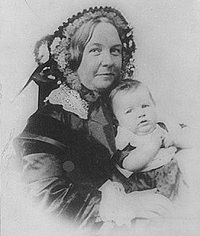 Elizabeth Cady Stanton
Elizabeth Cady Stanton
1815-1902
When Elizabeth Cady married abolitionist Henry Brewster Stanton in 1840, she’d already observed enough about the legal relationships between men and women to insist that the word “obey” be dropped from the ceremony.
An active abolitionist herself, Stanton was outraged when the World’s Anti-Slavery Convention in London, also in 1840, denied official standing to women delegates, including Lucretia Mott. In 1848, she and Mott called for a women’s rights convention to be conducted in Seneca Falls, New York. That convention, and the Declaration of Sentiments written by Stanton that was approved there, is credited with initiating the long struggle toward women’s rights and woman suffrage.
After 1851, Stanton worked in close partnership with Susan B. Anthony. Stanton often served as the writer and Anthony as the strategist in this effective working relationship.
In the years following the Civil War, Stanton and Anthony were among those who were determined to focus on female suffrage when only voting rights of freed males were addressed in Reconstruction. They founded the National Woman Suffrage Association and Stanton served as president.
When the NWSA and the rival American Woman Suffrage Association finally merged in 1890, Stanton served as the president of the resulting National American Woman Suffrage Association.
In her later years, she added to her speech- and article-writing a history of the suffrage movement, her autobiography, Eighty Years and More, and a controversial critique of women’s treatment by religion, The Woman’s Bible.
While Stanton is best known for her long contribution to the woman suffrage struggle, she was also active and effective in winning property rights for married women, equal guardianship of children and liberalized divorce laws. These reforms made it possible for women to leave marriages that were abusive of the wife, the children and the economic health of the family.
Elizabeth Cady Stanton died in New York on October 26, 1902, nearly 20 years before the United States granted women the right to vote.
Source: http://womenshistory.about.com/od/stantonelizabeth/a/stanton.htm
 Bibliography
Bibliography
Press your browser’s BACK button to return to the previous page.
 Suzanne Fisher Staples
Suzanne Fisher Staples
1945-
Suzanne Fisher Staples is the author of six books addressed to children and adolescents. Born in Philadelphia, Pennsylvania, she grew up in a small community in northeastern Pennsylvania. She had three siblings: a sister and two brothers. She went to Lakeland High School in Jermyn, Pennsylvania. Later, she graduated from Cedar Crest College in Allentown, Pennsylvania.
She was at one time employed as a news reporter and editor for The United Press International. She has worked in many places across the U.S. and Asia, including Pakistan.
Source: http://en.wikipedia.org/wiki/Suzanne_Fisher_Staples
 Bibliography
Bibliography
Press your browser’s BACK button to return to the previous page.
 Sir Richard Steele
Sir Richard Steele
1672-1729
Sir Richard Steele (baptized on March 12, 1672-September 1, 1729) was an Irish writer and politician, remembered as co-founder, with his friend Joseph Addison, of the magazine, The Spectator.
Steele was born in Dublin, Ireland, to Richard Steele, an attorney, and Elinor Symes (nee Sheyles). A member of the Protestant gentry, he was educated at Charterhouse School, where he first met Addison. After starting at Christ Church in Oxford, he went on to Merton College, Oxford, then joined the Life Guards of the Household Cavalry in order to support King William’s wars against France. He was commissioned in 1697 and rose up in the ranks within two years to become captain of the 34th Foot. He disliked British Army life and left the army in 1705, perhaps due to the death of the 34th Foot’s commanding officer, and with him, Steele’s opportunities for promotion. It may be no coincidence that Steele’s first published work, The Christian Hero (1701), attempted to point out the differences between perceived and actual masculinity.
In 1707, Steele married Mary Scurlock. In the course of their courtship and marriage, he wrote more than 400 letters to her. They were a devoted couple, their correspondence still being regarded as one of the best illustrations of a happy marriage, but their relationship was stormy. Mary died in 1718, at a time when she was considering separation.
Steele became a Member of Parliament of the United Kingdom in 1713 but was soon expelled for issuing a pamphlet in favor of the Hanoverian succession. When George I of Great Britain came to the throne in the following year, Steele was knighted and given responsibility for the Theatre Royal, Drury Lane, London. While at Drury Lane, Steele wrote and directed The Conscious Lovers, which was an immediate hit. However, he fell out with Addison and with the administration over the Peerage Bill (1719) and, in 1724, he retired to his wife’s homeland of Wales, where he spent the remainder of his life.
A member of the Whig Kit-Kat Club, Steele died on September 1, 1729, and was buried at St. Peter’s Church.
Source: http://en.wikipedia.org/wiki/Richard_Steele
 Bibliography
Bibliography
Press your browser’s BACK button to return to the previous page.
 Wallace Stegner
Wallace Stegner
1909-1993
Wallace Earle Stegner (February 18, 1909-April 13, 1993) was an American historian, novelist, short story writer and environmentalist, often called “The Dean of Western Writers.” He won the Pulitzer Prize for Fiction in 1972.
Stegner was born in Lake Milfs, Iowa, and grew up in Great Falls, Montana, Salt Lake City, Utah, and southern Saskatchewan, which he wrote about in his autobiography, Wolf Willow. Stegner says he “lived in 20 places in eight states and Canada.” Stegner summered in Greensboro, Vermont. While living in Utah, he joined a Boy Scout troop at an LDS church (although he himself was a Presbyterian) and earned the rank of Eagle Scout. He received a B.A. at the University of Utah in 1930. He also studied at the Iowa Writers’ Workshop at the University of Iowa, where he received a master’s degree in 1932 and a doctorate in 1935.
In 1934, Stegner married Mary Stuart Page.
Stegner died in Santa Fe, New Mexico, on April 13, 1993, from injuries suffered in an automobile accident on March 28, 1993.
Source: http://en.wikipedia.org/wiki/Wallace_Stegner
 Bibliography
Bibliography
Press your browser’s BACK button to return to the previous page.
 Gertrude Stein
Gertrude Stein
1874-1946
Gertrude Stein (February 3, 1874-July 27, 1946) was an American writer, poet and art collector who spent most of her life in France.
Stein, the youngest of a family of five children, was born in Allegheny, Pennsylvania (merged with Pittsburgh in 1907), to well-educated German Jewish parents, Daniel and Amelia Stein. Her father was a railroad executive whose investments in streetcar lines and real estate made the family wealthy.
When Stein was three years old, she and her family moved for business, first to Vienna and then Paris. They returned to America in 1878, settling in Oakland, California, where Stein attended First Hebrew Congregation of Oakland’s Sabbath School.
Stein attended Radcliffe College from 1893 to 1897 and was a student of psychologist William James. With James’ supervision, Stein and another student named Leon Mendez Solomons performed experiments on Normal Motor Automatism, a phenomenon hypothesized to occur in people when their attention is divided between two simultaneous intelligent activities, like writing and speaking. These experiments yielded examples of writing that appeared to represent “stream of consciousness,” a psychological theory often attributed to James, which became the term used to describe the style of Modernist authors like Virginia Woolf and James Joyce.
In 1903, Stein moved to Paris, where she would spend the rest of her life. While living in Paris, she began writing for publication. Her earliest writings were mainly retellings of her college experiences. Her first critically acclaimed publication was Three Lives.
During the 1930s, Stein and Alice B. Toklas became famous with the 1933 mass market publication of The Autobiography of Alice B. Toklas. She and Toklas had an extended lecture tour in the United States during this decade. They also spent several summers in Bilignin, France, and doted on a famous poodle named “Basket” whose successor, “Basket II,” comforted Toklas in the years after Stein’s death.
Stein died at the age of 72 from stomach cancer in Neuilly-sur-Seine on July 27, 1946, and was interred in Paris in the Pere Lachaise cemetery. When Stein was being wheeled into the operating room for surgery on her stomach, she asked Toklas, “What is the answer?” When Toklas did not reply, Stein said, “In that case, what is the question?”
Source: http://en.wikipedia.org/wiki/Gertrude_Stein
 Bibliography
Bibliography
Press your browser’s BACK button to return to the previous page.
 John Steinbeck
John Steinbeck
1902-1968
John Ernst Steinbeck was born on February 27, 1902, in Salinas, California, the only son of John Ernst Steinbeck Sr. and Olive Hamilton. His father was a bookkeeper and accountant who served for many years as the treasurer of Monterey County, California. Steinbeck inherited his love of literature from his mother, who was interested in the arts. His favorite book, and a main influence on his writing, was Sir Thomas Malory’s (c. 1408-1471) Le Morte d’Arthur, a collection of the legends of King Arthur. Steinbeck decided while in high school that he wanted to be a writer. He also enjoyed playing sports and worked during the summer on various ranches.
Steinbeck worked as a laboratory assistant and farm laborer to support himself through six years of study at Stanford University, where he took only those courses that interested him without seeking a degree. In 1925, he traveled to New York by way of the Panama Canal on a freighter. After arriving in New York, he worked as a reporter and as part of a construction crew building Madison Square Garden. During this time, he was also collecting impressions for his first novel, Cup of Gold (1929), an unsuccessful attempt at romance involving the pirate, Henry Morgan.
Undiscouraged, Steinbeck returned to California to begin work as a writer of serious fiction. A collection of short stories, The Pastures of Heaven (1932), contained vivid descriptions of rural life among the “unfinished children of nature” in his native California valley. His second novel, To a God Unknown (1933), was his strongest statement about man’s relationship to the land. With Tortilla Flat (1935), Steinbeck received critical and popular success.
Steinbeck next dealt with the problems of labor unions in the story, In Dubious Battle (1936), an effective tale of a strike by local grape pickers. Of Mice and Men (1937), first conceived as a play, is a tightly constructed novella about an unusual friendship between two migrant workers.
Steinbeck’s series of articles for The San Francisco Chronicle on the problems of migrant farm laborers provided material for The Grapes of Wrath (1939), his major novel and the finest working-class book of the 1930s.
During World War II (1939-45), Steinbeck served as a foreign correspondent. From this experience came such nonfiction as: Bombs Away: The Story of a Bomber Team (1942); Once There Was a War (1958), a collection of Steinbeck’s dispatches from 1943; and A Russian Journal (1948), with photographs by Robert Capa. More interesting nonfiction of this period is The Sea of Cortez, coauthored with scientist Edward F. Ricketts.
Steinbeck’s fiction during the 1940s includes: The Moon Is Down (1942); Cannery Row (1944); The Wayward Bus (1947); and The Pearl.
In the 1950s, Steinbeck’s artistic decline was evident with a series of novels that were overly sentimental, stuffy and lacking in substance. The author received modest critical praise in 1961 for his more ambitious novel, The Winter of Our Discontent, a study of the moral disintegration of a man of high ideals. In 1962, Travels with Charley, a pleasantly humorous account of his travels through America with his pet poodle, was well received. Following the popular success of the latter work, Steinbeck was awarded the Nobel Prize.
He died on December 20, 1968, in New York City.
Source: http://www.notablebiographies.com/Sc-St/Steinbeck-John.html
 Bibliography
Bibliography
Press your browser’s BACK button to return to the previous page.
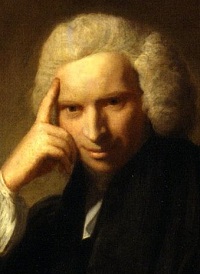 Laurence Sterne
Laurence Sterne
1713-1768
Laurence Sterne (November 24, 1713-March 18, 1768) was an Irish-born English novelist and Anglican clergyman. He is best known for his novels, The Life and Opinions of Tristram Shandy, Gentleman, and A Sentimental Journey through France and Italy, but he also published many sermons, wrote memoirs and was involved in local politics.
Sterne was born in Clonmel, County Tipperary, Ireland. His father was an ensign in a British regiment recently returned from Dunkirk. The regiment was disbanded on the day of Sterne’s birth and, within six months, the family had returned to Yorkshire in northern England.
Sterne was admitted to a sizarship at Jesus College, Cambridge, in July 1733, at the age of 20. He graduated with a degree of Bachelor of Arts in January 1737 and returned in the summer of 1740 to be awarded his Master of Arts degree.
He seems to have been destined to become a clergyman and was ordained as a deacon in March 1737 and as a priest in August 1738. Shortly thereafter, Sterne was awarded the vicarship living of Sutton-on-the-Forest in Yorkshire (1713-1768). He was also a prebendary of York Minster.
Sterne lived in Sutton for 20 years, during which time he kept up an intimacy that had begun at Cambridge with John Hall-Stevenson, a witty and accomplished bon vivant, owner of Skelton Hall in the Cleveland district of Yorkshire. Without Stevenson, Sterne might have been a more decorous parish priest but, then, might never have written Tristram Shandy.
It was while living in the countryside, having failed in his attempts to supplement his income as a farmer and struggling with tuberculosis, that Sterne began work on his most famous novel, The Life and Opinions of Tristram Shandy, Gentleman, the first volumes of which were published in 1759.
In 1759, to support his dean in a church squabble, Sterne wrote A Political Romance (later called The History of a Good Warm Watch-Coat), a Swiftian satire of dignitaries of the spiritual courts. At the demands of embarrassed churchmen, the book was burned. Thus, Sterne lost his chances for clerical advancement but discovered his real talents.
Sterne departed England for France in 1762 in an effort to find a climate that would alleviate his suffering from tuberculosis. Aspects of this trip to France were incorporated into his second novel, A Sentimental Journey through France and Italy, which was published at the beginning of 1768. The novel was written during a period in which Sterne was increasingly ill and weak.
Less than a month after Sentimental Journey was published, early in 1768, Sterne’s strength failed him and he died of consumption in his lodgings at 41 Old Bond Street on March 18, at the age of 54. He was buried in the churchyard of St. George’s, Hanover Square.
Source: http://en.wikipedia.org/wiki/Laurence_Sterne
 Bibliography
Bibliography
Press your browser’s BACK button to return to the previous page.
 Wallace Stevens
Wallace Stevens
1879-1955
Wallace Stevens (October 2, 1879-August 2, 1955) was an American Modernist poet. He was born in Reading, Pennsylvania, educated at Harvard and then New York Law School, and spent most of his life working as a lawyer for the Hartford insurance company in Connecticut.
His best-known poems include: “Anecdote of the Jar,” “Disillusionment of Ten o’Clock,” “The Emperor of Ice-Cream,” “The Idea of Order at Key West,” “Sunday Morning,” “The Snow Man” and “Thirteen Ways of Looking at a Blackbird,” all of which appear in his Collected Poems, for which he won the Pulitzer Prize for Poetry in 1955.
The son of a prosperous lawyer, Stevens attended Harvard as a non-degree special student, after which he moved to New York City and briefly worked as a journalist. He then attended New York Law School, graduating in 1903. He married Elsie Viola Kachel in 1909.
After working for several New York law firms from 1904 to 1907, he was hired on January 13, 1908, as a lawyer for the American Bonding Company. By 1914, he had become the vice president of the New York office of the Equitable Surety Company of St. Louis, Missouri.
When this job was abolished as a result of mergers in 1916, he joined the home office of Hartford Accident and Indemnity Company and left New York City to live in Hartford, where he would remain the rest of his life. By 1934, he had been named vice president of the company. After he won the Pulitzer Prize in 1955, he was offered a faculty position at Harvard but declined because it would have required him to give up his vice presidency of The Hartford.
From 1922 to 1940, Stevens made numerous visits to Key West, Florida, where he generally lodged at the Casa Marina, a hotel on the Atlantic Ocean. The influence of Key West upon Stevens’ poetry is evident in many of the poems published in his first two collections, Harmonium and Ideas of Order.
Stevens died of stomach cancer on August 2, 1955, at the age of 75. He is buried in Hartford’s Cedar Hill Cemetery.
Source: http://en.wikipedia.org/wiki/Wallace_Stevens
 Bibliography
Bibliography
Press your browser’s BACK button to return to the previous page.
 Anne Stevenson
Anne Stevenson
1933-2020
Anne Stevenson was born to American parents in Cambridge, England, but was raised in the United States and was educated in Ann Arbor, University of Michigan, where her father, C.L. Stevenson, was a professor of philosophy. After obtaining her bachelor’s and master’s degrees and graduating with honors, she returned to the UK, where she has lived most of her life. She has been married four times.
She is the author of more than a dozen volumes of poetry, some books of essays and literary criticism, a controversial biography of the American poet, Sylvia Plath, Bitter Fame: A Life of Sylvia Plath (1989), and two critical studies of Elizabeth Bishop.
Stevenson died from heart failure on September 14, 2020, at the age of 87.
Source: http://en.wikipedia.org/wiki/Anne_Stevenson#Anne_Stevenson.27s_Works
 Bibliography
Bibliography
Press your browser’s BACK button to return to the previous page.
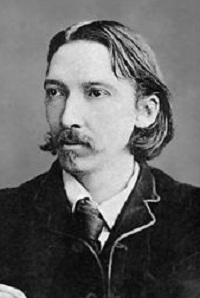 Robert Louis Stevenson
Robert Louis Stevenson
1850-1894
The Scottish novelist, essayist and poet Robert Louis Stevenson was one of the most popular and highly praised British writers during the last part of the 19th century.
Stevenson was born on November 13, 1850, in Edinburgh, Scotland, the son of a noted lighthouse builder and harbor engineer. Though healthy at birth, Stevenson soon became a victim of constant breathing problems that later developed into tuberculosis, a sometimes-fatal disease that attacks the lungs and bones. These persistent health problems made him extremely thin and weak most of his life.
By the time Stevenson entered Edinburgh University at the age of 16 to study engineering, he had fallen under the spell of language and had begun to write.
When he was 21, he openly declared his intention to become a writer, against the strong opposition of his father. Agreeing to study law as a compromise, Stevenson was admitted to the Scottish bar in 1875. Having traveled to the European mainland several times for health and pleasure, he now swung back and forth between Scotland and a growing circle of artistic and literary friends in London, England, and Paris, France. Stevenson’s first book, An Inland Voyage (1878), related his adventures during a canoe trip on Belgium and France’s canals.
In France in 1876, Stevenson met an American woman named Fanny Osbourne. Separated from her husband, she was 11 years older than Stevenson and had two children. Three years later, Stevenson and Osbourne were married. After accompanying his wife to America, Stevenson stayed in an abandoned mining camp, later recounted in The Silverado Squatters (1883). A year after setting out for the United States, Stevenson was back in Scotland. But the climate there proved to be a severe hardship on his health and, for the next four years, he and his wife lived in Switzerland and in the south of France. Despite his health, these years proved to be productive. The stories Stevenson collected in The New Arabian Nights (1883) and The Merry Men (1887) range from detective stories to Scottish dialect tales, or tales of the region.
Treasure Island (1881), first published as a series in a children’s magazine, ranks as Stevenson’s first popular book and it established his fame. Kidnapped (1886), set in Scotland during a time of great civil unrest, has the same charm. In its sequel, David Balfour (1893), Stevenson could not avoid psychological and moral problems without marked strain. In The Strange Case of Dr. Jekyll and Mr. Hyde (1886), he dealt directly with the nature of evil in man and the hideous effects that occur when man seeks to deny it. During this same period, he published a very popular collection of poetry, A Child’s Garden of Verses (1885).
In 1889, Stevenson and his family set out on a cruise of the South Sea Islands. When it became clear that only there could he live in relatively good health, he settled on the island of Upolu in Samoa. He bought a plantation (Vailima), built a house and gained influence with the natives, who called him Tusifala (“teller of tales”). His observations on Samoan life were published in the collection, In the South Seas (1896), and in A Footnote to History (1892).
By the time of his death of a cerebral hemorrhage on December 3, 1894, Stevenson had become a significant figure in island affairs.
Source: http://www.notablebiographies.com/Sc-St/Stevenson-Robert-Louis.html
 Bibliography
Bibliography
Press your browser’s BACK button to return to the previous page.
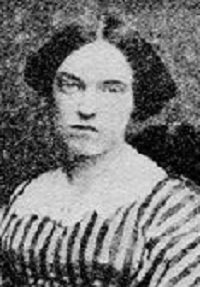 Elizabeth Stoddard
Elizabeth Stoddard
1823-1902
Elizabeth Drew Stoddard, nee Barstow (May 6, 1823-August 1, 1902), was an American poet and novelist. She was born in the small coastal town of Mattapoisett, Massachusetts. After her marriage in 1852 to poet Richard Henry Stoddard, the couple settled permanently in New York City, where they belonged to New York’s vibrant, close-knit literary and artistic circles.
She studied at Wheaton Seminary, Norton, Massachusetts. After her marriage, she assisted her husband in his literary work and contributed stories, poems and essays to the periodicals. Many of her own works were originally published between 1859 and 1890 in such magazines as Harper’s Monthly, Harper’s Bazaar and The Atlantic Monthly.
Stoddard is most widely known today as the author of The Morgesons (1862), her first of three novels. Her other two novels are Two Men (1865) and Temple House (1867). Stoddard was also a prolific writer of short stories, children’s tales, poems, essays, travel and journalism pieces.
Source: http://en.wikipedia.org/wiki/Elizabeth_Drew_Stoddard
 Bibliography
Bibliography
Press your browser’s BACK button to return to the previous page.
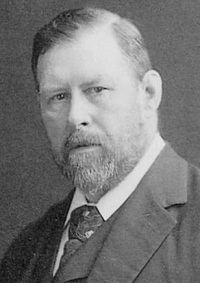 Bram Stoker
Bram Stoker
1847-1912
Abraham “Bram” Stoker (November 8, 1847-April 20, 1912) was an Irish novelist and short story writer, best known today for his 1897 Gothic novel, Dracula.
Stoker was born at 15 Marino Crescent, Clontarf, on the north side of Dublin, Ireland. His parents were Abraham Stoker, from Dublin, and Charlotte Mathilda Blake Thornley, who came from Ballyshannon, County Donegal. Stoker was bedridden until he started school at the age of seven, when he made a complete recovery. After his recovery, he grew up without further major health issues, even excelling as an athlete at Trinity College, Dublin, which he attended from 1864 to 1870. He graduated with honors in mathematics. He was auditor of the College Historical Society and president of the University Philosophical Society, where his first paper was on “Sensationalism in Fiction and Society.”
Stoker became interested in the theatre while a student. He became the theatre critic for The Dublin Evening Mail, co-owned by the author of Gothic tales, Joseph Sheridan Le Fanu. Stoker also wrote stories and, in 1872, “The Crystal Cup” was published by The London Society, followed by “The Chain of Destiny” in four parts in The Shamrock. In 1876, while a civil servant in Dublin, Stoker wrote a nonfiction book, The Duties of Clerks of Petty Sessions in Ireland, published 1879, which remained a standard work.
After suffering a number of strokes, Stoker died at No. 26 St. George’s Square in 1912.
Source: http://en.wikipedia.org/wiki/Bram_Stoker
 Bibliography
Bibliography
Press your browser’s BACK button to return to the previous page.
 Mary Stolz
Mary Stolz
1920-2006
Mary Stolz (born Mary Slattery, March 24, 1920-December 15, 2006) was an American writer of fiction for children and young adults. Her works received Newbery Honors in 1962 and 1966 and her entire body of work was awarded the George G. Stone Recognition of Merit in 1982.
Her literary works range from picture books to young-adult novels. Although most of Stolz’s books are fiction, she has made a few contributions to magazines such as Cosmopolitan, Ladies’ Home Journal and Seventeen.
She was born in Boston, Massachusetts. Raised in Manhattan, she attended the Birch Wathen School and served as assistant editor of her school magazine, Birch Leaves. She attended Columbia University from 1936 to 1938 and the Katherine Gibbs School.
At age 18, she married Stanley Burr Stolz; they had one son together. Chronic pain from arthritis worsened and she was housebound by 1949. During this time, she began writing to occupy her time and ultimately drafted her first novel, To Tell Your Love (1950), on yellow legal pads. She divorced Stanley Stolz in 1956. Under Dr. Thomas C. Jaleski’s care, her disabling symptoms resolved and, in 1965, she married Jaleski.
Stolz died in Longboat Key, Florida.
Source: http://en.wikipedia.org/wiki/Mary_Stolz
 Bibliography
Bibliography
Press your browser’s BACK button to return to the previous page.
 Tom Stoppard
Tom Stoppard
1937-
Sir Tom Stoppard (July 3, 1937) is a British playwright, knighted in 1997. He has written prolifically for TV, radio, film and stage, finding prominence with plays such as Arcadia, The Coast of Utopia, Every Good Boy Deserves Favour, Professional Foul, The Real Thing and Rosencrantz and Guildenstern Are Dead. He co-wrote the screenplays for Brazil and Shakespeare in Love and has won one Academy Award and four Tony Awards. Themes of human rights, censorship and political freedom pervade his work, along with exploration of linguistics and philosophy.
In 1939, Stoppard left Czechoslovakia as a child refugee, fleeing imminent Nazi occupation. He settled with his family in Britain after the war, in 1946. After being educated at schools in Nottingham and Yorkshire, Stoppard became a journalist, a drama critic and then, in 1960, a playwright.
Source: http://en.wikipedia.org/wiki/Tom_Stoppard
 Bibliography
Bibliography
Press your browser’s BACK button to return to the previous page.
 Harriet Beecher Stowe
Harriet Beecher Stowe
1811-1896
Harriet Beecher Stowe (June 14, 1811-July 1, 1896) was an American abolitionist and author. Her novel, Uncle Tom’s Cabin (1852), was a depiction of life for African-Americans under slavery; it reached millions as a novel and play and became influential in the United States and United Kingdom. It energized anti-slavery forces in the American North, while provoking widespread anger in the South. She wrote more than 20 books, including novels, three travel memoirs and collections of articles and letters.
Beecher was born in Litchfield, Connecticut, to outspoken religious leader Lyman Beecher and Roxana Foote, a deeply religious woman who died when Stowe was only five years old.
She enrolled in the seminary (girls’ school) run by her sister Catharine, where she received a traditionally “male” education in the classics, including study of languages and mathematics. At the age of 21, she moved to Cincinnati, Ohio, to join her father, who had become the president of Lane Theological Seminary. It was there that she met Calvin Ellis Stowe, a widower and professor at the seminary. The two married on January 6, 1836. He was an ardent critic of slavery and the Stowes supported the Underground Railroad, temporarily housing several fugitive slaves in their home.
In 1850, Congress passed the Fugitive Slave Law, prohibiting assistance to fugitives. At the time, she had moved with her family into a home on the campus of Bowdoin College, where her husband was now teaching. On March 9, 1850, Stowe wrote to Gamaliel Bailey, editor of the weekly antislavery journal, The National Era, that she planned to write a story about the problem of slavery. Shortly after, in June 1851, when she was 40, the first installment of her Uncle Tom’s Cabin was published in The National Era. Installments were published weekly from June 5, 1851, to April 1, 1852. Uncle Tom’s Cabin was published in book form on March 20, 1852. In less than a year, the book sold an unprecedented 300,000 copies.
Stowe died on July 1, 1896, at age 85, in Hartford, Connecticut.
Source: http://en.wikipedia.org/wiki/Harriet_Beecher_Stowe
 Bibliography
Bibliography
Press your browser’s BACK button to return to the previous page.
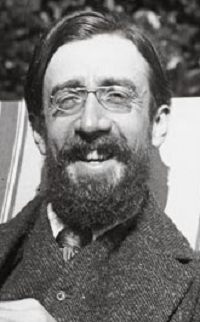 Lytton Strachey
Lytton Strachey
1880-1932
Giles Lytton Strachey (March 1, 1880-January 21, 1932) was a British writer and critic. A founding member of the Bloomsbury Group and author of Eminent Victorians, he is best known for establishing a new form of biography in which psychological insight and sympathy are combined with irreverence and wit. His 1921 biography, Queen Victoria, was awarded the James Tait Black Memorial Prize.
Strachey was born at Stowey House, Clapham Common, London, the fifth son and the 11th child of Lieutenant General Sir Richard Strachey, an officer in the colonial British armed forces, and his second wife, the former Jane Grant, who became a leading supporter of the women’s suffrage movement.
When in 1897 Strachey turned 17, Lady Strachey decided that her son was ready to leave school and go to university but, because she thought he was yet too young for Oxford, she decided that he should first attend a smaller institution, the University of Liverpool. Later Strachey was admitted as Pensioner at Trinity College, Cambridge, on September 30, 1899. He became an Exhibitioner in 1900 and a Scholar in 1902. He won the Chancellor’s Medal for English Verse in 1902 and was given a B.A. degree after he had won a second-class in the History Tripos in June 1903. The Cambridge period was one in which Strachey was highly prolific in writing verse, much of which has been preserved and some of which was published at the time.
In 1911, H.A.L. Fisher, a former president of the British Academy and of the Board of Education, was in search of someone to write a short, one-volume survey of French literature. Fisher had read one of Strachey’s reviews (“Two Frenchmen,” Independent Review, 1903) and asked him to write a such a sketch in 50,000 words, giving him J.W. Mackail’s 1909 Latin Literature as a model. Landmarks in French Literature was published on January 12, 1912.
Soon after the publication of Landmarks, Strachey’s mother and his friend, Harry Norton, supported him financially. Each provided him with £100 which, together with earnings from The Edinburgh Review and from other periodicals, made it possible for him to rent a small, thatched cottage called “The Lacket” outside the village of Lockeridge, near Marlborough, Wiltshire. Here, he established himself until 1916 and wrote the first three parts of Eminent Victorians.
After the success of Eminent Victorians, published on May 9, 1918, he needed no help from outside. He continued to live at Tidmarsh until the proceeds from Queen Victoria (1921) made it possible for him to buy Ham Spray House near Marlborough, Wiltshire, to which he moved in July 1924 and which was his home for the rest of his life. From 1904 to 1914, Strachey contributed book and drama reviews to The Spectator magazine.
He died of (then-undiagnosed) stomach cancer on January 21, 1932, age 51, at Ham Spray House, at Ham in Wiltshire.
Source: http://en.wikipedia.org/wiki/Lytton_Strachey
 Bibliography
Bibliography
Press your browser’s BACK button to return to the previous page.
 Todd Strasser (Morton Rhue)
Todd Strasser (Morton Rhue)
1952-
Todd Strasser (born May 5, 1952 in New York City, New York) is an American author of more than 130 young-adult and middle-grade novels and novelizations, some written under the pen names Morton Rhue and T.S. Rue.
After studying literature in college, Strasser earned his living working as a journalist and also operated his own fortune cookie company, producing cookies under the “Dr. Wing Tip Shoo” brand name.
His works include: Give a Boy a Gun; Boot Camp; Asphalt Tribe; and, more recently, If I Grow Up. His most famous work, The Wave, is a novelization of a social experiment that happened in Cubberley High School in Palo Alto, California, in 1969, and was made into a television movie in 1981 and a popular feature film in 2008.
Strasser is also the author of the Time Zone High trilogy: How I Changed My Life; How I Created My Perfect Prom Date; and How I Spent My Last Night on Earth. How I Created My Perfect Prom Date was adapted for the feature film Drive Me Crazy.
Other novels for young adults include The Accident, as well as Angel Dust Blues, Friends Till the End and A Very Touchy Subject. Another novel, Workin’ for Peanuts, was adapted into a television movie with the same title.
He is currently at work on a trilogy, three mystery thrillers for older young-adult readers. The first two of these novels, Wish You Were Dead and Blood on My Hands, have been published.
Strasser has also written a number of young-adult series, including Impact Zone (about surfing), Drift X (about drift car competitions) and Here Comes Heavenly (about a punk nanny with magical powers).
His books for middle-graders include: CON-fidence; The Diving Bell; and Abe Lincoln for Class President. His series for middle-graders include: the very popular 16-book Help! I’m Trapped … collection, as well as the Don’t Get Caught, Against the Odds and Camp Run-a-Muck books. Most recently he wrote Is That a Dead Dog in Your Locker? Is That a Sick Cat in Your Backpack? Is That a Glow-in-the-Dark Bunny in Your Pillow Case? Is That an Angry Penguin in Your Gym Bag? and Is That an Unlucky Leprechaun in Your Lunch?
Strasser has also published articles and short stories in The New Yorker, Esquire and The New York Times.
Source: http://en.wikipedia.org/wiki/Todd_Strasser
 Bibliography
Bibliography
Press your browser’s BACK button to return to the previous page.
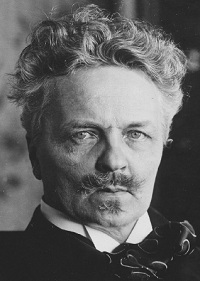 August Strindberg
August Strindberg
1849-1912
Johan August Strindberg (January 22, 1849-May 14, 1912) was a Swedish playwright, novelist, poet, essayist and painter. A prolific writer who often drew directly on his personal experience, Strindberg’s career spanned four decades, during which time he wrote more than 60 plays and more than 30 works of fiction, autobiography, history, cultural analysis and politics.
He is considered the “father” of modern Swedish literature and his The Red Room (1879) has frequently been described as the first modern Swedish novel.
The Royal Theatre rejected his first major play, Master Olof, in 1872; it was not until 1881, when Strindberg was 32, that its premiere at the New Theatre gave him his theatrical breakthrough. In his plays The Father (1887), Miss Julie (1888) and Creditors (1889), he created naturalistic dramas that responded to the call-to-arms of Emile Zola’s manifesto, “Naturalism in the Theatre” (1881), and the example set by Andre Antoine’s newly established Theatre Libre (opened 1887).
Strindberg modeled his short-lived Scandinavian Experimental Theatre (1889) in Copenhagen on Antoine’s theatre and he explored the theory of Naturalism in his essays, “On Psychic Murder” (1887), “On Modern Drama and the Modern Theatre” (1889) and a preface to Miss Julie, the last of which is probably the best-known statement of the principles of the theatrical movement.
During the 1890s, he spent significant time abroad engaged in scientific experiments and studies of the occult. A series of psychotic attacks between 1894 to 1896 (referred to as his “Inferno crisis”) led to his hospitalization and return to Sweden. Under the influence of the ideas of Emanuel Swedenborg, he resolved after his recovery to become “the Zola of the Occult.”
In 1898, he returned to playwriting with To Damascus which, like The Great Highway (1909), is a dream-play of spiritual pilgrimage. His A Dream Play (1902) was an important precursor to both expressionism and surrealism. He also returned to writing historical drama, the genre with which he had begun his playwriting career.
He died on May 14, 1912 at the age of 63.
Source: http://en.wikipedia.org/wiki/August_Strindberg
 Bibliography
Bibliography
Press your browser’s BACK button to return to the previous page.
 Preston Sturges
Preston Sturges
1898-1959
Preston Sturges’ own life is as unlikely as some of the plots of his best work. He was born into a wealthy family. As a boy he helped out on stage productions for his mother’s friend, Isadora Duncan. He served in the U.S. Army Signal Corps during World War I. Upon his return, he worked for his mother’s fashion company and invented a kiss-proof lipstick, Red-Red Rouge, in 1920.
Shortly after his first marriage, his mother demanded that he return control of the company to her. Kicked out of Maison Desti, he turned to inventing. A tickertape machine, an intaglio photo-etching process, an automobile and an airplane were among some of his commercially unsuccessful inventions.
He began writing stories and, while recovering from an appendectomy in 1929, wrote his first play, The Guinea Pig. In financial trouble over producing his plays, he moved to Hollywood in 1932 to make money. It wasn’t long before he became frustrated by the lack of control he had over his work and wanted to direct the scripts he wrote. Paramount gave him this chance as part of a deal for selling his script for The Great McGinty (1940) at a cheap price. The film’s success launched his career as writer/director and he had several hits over the next four years. That success emboldened him to become an independent filmmaker, but that did not last long – he had a string of commercial failures and acquired a reputation as an expensive perfectionist.
He moved to France to make what turned out to be his last movie, The French, They Are a Funny Race (1955).
He died at the Algonquin Hotel, New York City, in 1959.
Source: http://www.imdb.com/name/nm0002545/bio
 Bibliography
Bibliography
Press your browser’s BACK button to return to the previous page.
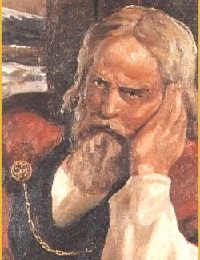 Snorri Sturluson
Snorri Sturluson
1179-1241
Snorri Sturluson (1179-September 23, 1241) was an Icelandic historian, poet and politician. He was twice elected lawspeaker at the Icelandic parliament, the Althing. He was the author of the Prose Edda or Younger Edda, which consists of Gylfaginning (“the fooling of Gylfi”), a narrative of Norse mythology, the Skaldskaparmal, a book of poetic language, and the Hattatal, a list of verse forms. He was also the author of the Heimskringla, a history of the Norwegian kings that begins with legendary material in the Ynglinga saga and moves through to early medieval Scandinavian history. For stylistic and methodological reasons, Snorri is often taken to be the author of Egil’s Saga.
As a historian and mythographer, Sturluson is remarkable for proposing the theory (in the Prose Edda) that mythological gods begin as human war leaders and kings whose funeral sites develop cults. As people call upon the dead war leader before going to battle, or the dead king as they face tribal hardship, they begin to venerate the figure. Eventually, the king or warrior is remembered only as a god. He also proposed that, as tribes defeat others, they explain their victory by proposing that their own gods were in battle with the gods of the others.
Source: http://en.wikipedia.org/wiki/Snorri_Sturluson
 Bibliography
Bibliography
Press your browser’s BACK button to return to the previous page.
 William Styron
William Styron
1925-2006
William Clark Styron Jr. (June 11, 1925-November 1, 2006) was an American novelist and essayist who won major literary awards for his work.
Styron was born in the Hilton Village historic district of Newport News, Virginia. He grew up in the South and was steeped in its history. His birthplace was less than 100 miles from the site of Nat Turner’s slave rebellion, later the source for Styron’s most famous and controversial novel.
For much of his career, Styron was best known for his novels, which included: Lie Down in Darkness (1951), which he wrote at age 26; The Confessions of Nat Turner (1967), narrated by Nat Turner, the leader of an 1831 Virginia slave revolt; and Sophie’s Choice (1979), a story “told through the eyes of a young aspiring writer from the South, about a Polish Catholic survivor of Auschwitz and her brilliant but troubled Jewish lover in postwar Brooklyn.”
Styron’s influence deepened and his readership expanded with the publication of Darkness Visible in 1990. This memoir, originally intended as a magazine article, chronicled the author’s descent into depression and his near-fatal night of “despair beyond despair.”
Styron died from pneumonia on November 1, 2006, at the age of 81, in Martha’s Vineyard.
Source: http://en.wikipedia.org/wiki/William_Styron
 Bibliography
Bibliography
Press your browser’s BACK button to return to the previous page.
 Sir John Suckling
Sir John Suckling
1609-1642
John Suckling was born at Whitton, between Twickenham and Hounslow, Middlesex, on February 10, 1609. His father, descendant of a prominent Norfolk family, was appointed Comptroller of James I’s household in 1622. Suckling matriculated at Trinity College, Cambridge, in 1623 but left without taking a degree in 1626.
Suckling inherited extensive estates on his father’s death in 1626 and was admitted to Gray’s Inn in 1627. Just 18 years old, he pursued a military and ambassadorial career in the Low Countries and joined the English soldiers serving in the army of Gustavus Adolphus during the Thirty Years’ War. Suckling was knighted in September 1630. He returned to the English court in May 1632, where he became very popular through his wealth and charm. He was known as a gamester and is credited with having invented the game of cribbage.
In 1637, Suckling wrote the prose work, Account of Religion by Reason. His play, Aglaura, was published in 1638 and performed twice for Charles I. It was not a critical success but it introduced the wonderful lyric poem, “Why so pale and wan, fond lover?” In the same year, Suckling’s comedy, The Goblins, was published.
In 1639, Suckling recruited and equipped cavalry to help King Charles I in his first Scottish war. He was ridiculed in London for the troops’ scarlet uniforms and plumed hats, but he was well-favored by the king. In 1640, Suckling sat in Parliament for Bramber and took part in an unsuccessful action against the Scots. In May 1641, Suckling took an active part in the royalist plot to rescue Strafford from the Tower. When Parliament ordered him to account for his movements, Suckling fled through Dieppe to Paris. He died in Paris a few months later, in 1642, either from suicide by poison or, as another tradition has it, by the hand of a servant who placed a razor in his boot.
Source: http://www.luminarium.org/sevenlit/suckling/sjsbio.htm
 Bibliography
Bibliography
Press your browser’s BACK button to return to the previous page.
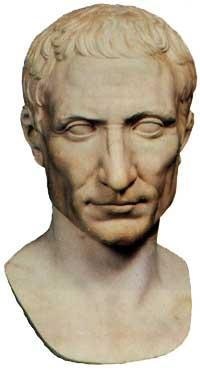 Suetonius
Suetonius
70 AD-130 AD
Gaius Suetonius Tranquillus, commonly known as Suetonius (ca. 69/75 AD-after 130 AD), was an equestrian and a historian during the Roman Empire. His most important surviving work is a set of biographies of 12 successive Roman rulers, from Julius Caesar until Domitian, entitled De Vita Caesarum. Other works by Suetonius concern the daily life of Rome, politics, oratory and the lives of famous writers, including poets, historians and grammarians. A few of these books have partially survived, but many are entirely lost.
Suetonius was born the son of Suetonius Laetus, who probably came from Hippo Regius (Annaba, Algeria). Laetus was an equestrian who served and took part in the first Battle of Bedriacum for the Emperor Otho and against the future Emperor Vitellius in 69 AD.
Suetonius was a close friend to Senator and letter-writer Pliny the Younger. Pliny describes him as “quiet and studious, a man dedicated to writing.” Pliny helped him buy a small property in Italy and interceded with the Emperor Trajan to grant Suetonius immunities usually granted to a father of three, the ius trium liberorum, because his marriage was childless. Through Pliny, Suetonius came into favor with Trajan and Hadrian. Suetonius may have served on Pliny’s staff when Pliny was Proconsul of Bithynia Pontus (northern Asia Minor) between 110 AD and 112 AD.
Under Trajan, he served as secretary of studies and director of Imperial archives. Under Hadrian, he became the Emperor’s secretary. But, in 119, Hadrian dismissed Suetonius for an affair with Empress Vibia Sabina. Suetonius may have later regained imperial favor under Hadrian and returned to his position. This hypothesis is based on the suggestion that Offices of State was one of his last works, and that the subject was chosen to reflect Hadrian’s administrative reforms; however, there is no certain evidence of a public career after 120 AD.
Source: http://en.wikipedia.org/wiki/Suetonius
 Bibliography
Bibliography
Press your browser’s BACK button to return to the previous page.
 Patrick Suskind
Patrick Suskind
1949-
Patrick Suskind (born March 26, 1949) is a German writer and screenwriter. He was born in Ambach am Starnberger See, near Munich, in Germany. He went to school in Holzhausen, a little Bavarian village. After his Abitur and his Zivildienst, he studied Medieval and Modern History at the University of Munich and in Aix-en-Provence from 1968-1974. Suskind also attended lessons in English, Spanish, Latin, Greek, Politics, Art and Theology but, apparently, never graduated. Financially supported by his parents, he moved to Paris, where he began writing.
In 1981, he had his breakthrough with the play, Der Kontrabasa¸ (The Double Bass), which was originally conceived as a radio play. In the season 1984/85, the play was performed more than 500 times, the German-language play performed most that season. The only role is tragi-comical orchestral musician, who has so many problems with his instrument and his insignificance that he falls into nagging fatalism.
In the 1980s, Suskind was also successful as a screenwriter for the TV productions, Kir Royal (1987) and Monaco Franze (1983), among others. For his screenplay of Rossini, he earned the Screenplay Prize of the German Department for Culture in 1996.
His best-known work is the internationally acclaimed bestseller, Perfume: The Story of a Murderer (1985). He is also the author of a novella, The Pigeon (1988), The Story of Mr. Sommer (1991), Three Stories and a Reflection (1996) and a collection of essays, On Love and Death (2006).
Suskind lives reclusively in Munich, in Seeheim and in France.
Source: http://en.wikipedia.org/wiki/Patrick_S%C3%BCskind
 Bibliography
Bibliography
Press your browser’s BACK button to return to the previous page.
 Emanuel Swedenborg
Emanuel Swedenborg
1688-1772
Emanuel Swedenborg (born Emanuel Swedberg; January 29, 1688-March 29, 1772) was a Swedish scientist, philosopher, Christian mystic and theologian. Swedenborg had a prolific career as an inventor and scientist. At the age of 56, he entered into a spiritual phase in which he experienced dreams and visions. This culminated in a spiritual awakening, in which he claimed he was appointed by the Lord to write a heavenly doctrine to reform Christianity. He claimed that the Lord had opened his eyes, so that from then on he could freely visit heaven and hell, and talk with angels, demons and other spirits. For the remaining 28 years of his life, he wrote and published 18 theological works, of which the best known was Heaven and Hell (1758), and several unpublished theological works.
Swedenborg completed his university course at Uppsala in 1709 and, in 1710, made his grand tour through the Netherlands, France and Germany, before reaching London, where he would spend the next four years. He studied physics, mechanics and philosophy and read and wrote poetry.
In July 1770, at the age of 82, he traveled to Amsterdam to complete the publication of his last work. The book, Vera Christiana Religio (The True Christian Religion), was published in Amsterdam in 1771 and was one of the most appreciated of his works. Designed to explain his teachings to Lutheran Christians, it was the most concrete of his publications.
In the summer of 1771, he traveled to London. Shortly before Christmas, he suffered a stroke and was partially paralyzed and confined to bed. His health improved somewhat but he died on March 29, 1772.
Source: http://en.wikipedia.org/wiki/Emanuel_Swedenborg
 Bibliography
Bibliography
Press your browser’s BACK button to return to the previous page.
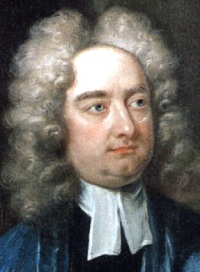 Jonathan Swift
Jonathan Swift
1667-1745
Jonathan Swift was born on November 30, 1667, in Dublin, Ireland, the son of Protestant Anglo-Irish parents: His ancestors had been Royalists and all his life he would be a High-Churchman. Between 1682 and 1686, he attended, and graduated from, Trinity College in Dublin, though he was not, apparently, an exemplary student.
In 1688, William of Orange invaded England, initiating the Glorious Revolution. With Dublin in political turmoil, Trinity College was closed and an ambitious Swift took the opportunity to go to England, where he hoped to gain preferment in the Anglican Church. In England, in 1689, he became secretary to Sir William Temple, a diplomat and man of letters, at Moor Park in Surrey. There, Swift read extensively in his patron’s library and met Esther Johnson, who would become his “Stella.” It was there, too, that he began to suffer from Meniere’s Disease, a disturbance of the inner ear that produces nausea and vertigo, and which was little understood in Swift’s day. He visited Oxford in 1691; in 1692, with Temple’s assistance, he received an M.A. degree from the university and published his first poem.
In 1694, still anxious to advance himself within the Church of England, he left Temple’s household and returned to Ireland to take holy orders. In 1695, he was ordained as a priest in the Church of Ireland, the Irish branch of the Anglican Church and, the following year, he returned to Temple and Moor Park.
Between 1696 and 1699, Swift composed most of his first great work, including “A Tale of a Tub” and, in 1697, “The Battle of the Books.”
In 1700, he was instituted Vicar of Laracor – provided, that is, with what was known as a “Living” – and given a prebend in St. Patrick’s Cathedral, Dublin. These appointments were a bitter disappointment for a man who had longed to remain in England. In 1701, Swift was awarded a D.D. from Dublin University and published his first political pamphlet supporting the Whigs against the Tories. The year 1704 saw the anonymous publication of “A Tale of a Tub,” “The Battle of the Books” and “The Mechanical Operation of the Spirit.”
In 1708, Swift met Joseph Addison and Thomas Steele and published his Bickerstaff Papers and a series of ironical pamphlets on church questions, including “An Argument against Abolishing Christianity.”
In 1710, he published “A Description of a City Shower” and became the editor of the Tory newspaper, The Examiner. Between 1710 and 1713, he also wrote the famous series of letters to Esther Johnson that would eventually be published as The Journal to Stella. In 1713, Swift was installed as Dean of St. Patrick’s Cathedral in Dublin.
In 1720, he began work on Gulliver’s Travels. The Drapier Letters were published in 1724-25. “A Modest Proposal” was published in 1729 and “A Beautiful Young Nymph Going to Bed” was released in 1731.
During 1738, he slipped gradually into senility and finally suffered a paralytic stroke. Swift died on October 19, 1745.
Source: http://www.victorianweb.org/previctorian/swift/bio.html
 Bibliography
Bibliography
Press your browser’s BACK button to return to the previous page.
 Algernon Charles Swinburne
Algernon Charles Swinburne
1837-1909
Algernon Charles Swinburne (April 5, 1837-April 10, 1909) was an English poet, playwright, novelist and critic. He invented the roundel form, wrote several novels and contributed to the famous Eleventh Edition of the Encyclopaedia Britannica. He was nominated for the Nobel Prize in Literature in every year from 1903 to 1907 and again in 1909.
Swinburne was born at 7 Chester Street, Grosvenor Place, London. He was the eldest of six children born to Captain (later Admiral) Charles Henry Swinburne and Lady Jane Henrietta, daughter of the 3rd Earl of Ashburnham. He grew up at East Dene in Bonchurch on the Isle of Wight and attended Eton College, 1849-53, where he first started writing poetry, and then Balliol College, Oxford, 1856-60, with a brief hiatus when he was rusticated from the university in 1859 for having publicly supported the attempted assassination of Napoleon III by Felice Orsini, returning in May 1860, though he never received a degree.
After leaving college, he lived in London and started an active writing career. His poetic works include: Atalanta in Calydon (1865), Poems and Ballads (1866), Songs before Sunrise (1871), Poems and Ballads, Second Series (1878), Tristram of Lyonesse (1882), Poems and Ballads, Third Series (1889) and the novel, Lesbia Brandon (published posthumously in 1952).
Swinburne was an alcoholic and algolagniac and a highly excitable character. His health suffered as a result and, in 1879, at the age of 42, he was taken into care by his friend, Theodore Watts, who looked after him for the rest of his life at The Pines, 11 Putney Hill, Putney. Thereafter, he lost his youthful rebelliousness and developed into a figure of social respectability.
He died at the Pines on April 10, 1909, at the age of 72.
Source: http://en.wikipedia.org/wiki/Algernon_Charles_Swinburne
 Bibliography
Bibliography
Press your browser’s BACK button to return to the previous page.
 Meera Syal
Meera Syal
1961-
Meera Syal (born June 27, 1961) is a British comedienne, writer, playwright, singer, journalist, producer and actress. She rose to prominence as one of the team that created Goodness Gracious Me and became one of the UK’s best-known Indian personalities, portraying Sanjeev’s grandmother, Ummi, in The Kumars at No. 42. She was awarded the MBE in the 1997 New Year Honours.
Her Punjab-born parents came to England from New Delhi. She was born in Wolverhampton, Staffordshire, and grew up in Essington, a mining village a few miles to the north. When she was a young girl, the family moved to Bloxwich. She attended Queen Mary’s High School in nearby Walsall and then studied English and drama at Manchester University.
Syal wrote the screenplay for the 1993 film, Bhaji on the Beach, directed by Gurinder Chadha, of Bend It Like Beckham fame. She was one of the team who wrote and performed in the BBC comedy sketch show, Goodness Gracious Me (1996-2001), originally on radio and then on television.
She achieved a No. 1 record with Gareth Gates and her co-stars from The Kumars at No. 42 with “Spirit in the Sky,” the Comic Relief single. She also sang “Then He Kissed Me” (composed by Biddu) with the Pakistani pop star, Nazia Hassan. Syal, Hassan and Biddu also came up with the girl band named “Saffron” in 1988.
In October 2008, she starred in the BBC2 sitcom Beautiful People. This role, as Aunty Hayley, continued in 2009. Syal starred in the 11th series of Holby City as Consultant Tara Sodi. In 2009, she guest starred in Minder and starred in the film, Mad, Sad & Bad. In 2010, she played Shirley Valentine in a one-woman show at the Trafalgar Studios. In the same year, she played Nasreen Chroudhry in two episodes of Doctor Who alongside Matt Smith.
Source: http://en.wikipedia.org/wiki/Meera_Syal
 Bibliography
Bibliography
Press your browser’s BACK button to return to the previous page.
 John Millington Synge
John Millington Synge
1871-1909
John Millington Synge was born at Newtown Little, in the vicinity of Dublin, in 1871. Not much is known of his early life except that he lived at home until he was nearly 20, that he entered Trinity College, Dublin, in 1888, and was graduated four years later. His predilection was for languages and music, although he was ever an ardent nature-lover.
For many years, he wandered about the Continent, writing a little and allowing impressions of men and nature to gather in his receptive mind. He went first to Germany with the intention of pursuing his musical studies; after a year, he abandoned the idea and went to Paris in order to do literary criticism.
Still uncertain of his true calling, he made various though unsuccessful attempts to write poetry and essays. He did not “find himself” until he was discovered by another young enthusiast from Ireland, W.B. Yeats who, in 1898, induced him to leave Paris and return to Ireland and devote himself to a study of the people and write real Irish plays for the recently founded Irish Theater. In the Aran Islands, in Wicklow and Kerry and Connemara, Synge found the necessary material and inspiration for his plays.
Synge suffered from Hodgkin’s disease, a form of cancer at the time untreatable. He died in Dublin in 1909.
Source: http://www.theatredatabase.com/20th_century/john_millington_synge_001.html